Thinking In 3D: A Better Way To Solve Complex Problems
- Self-improvement
We shouldn’t confuse just thinking with good thinking . Practically every situation we encounter requires thinking before acting. But commonly, your usual cognitive methods won’t cut it. You’ll need a fresh perspective. A new way to look at things to solve a complex problem. That’s where thinking in 3D – or three-dimensional thinking – can help.
The scientific word for 3D thinking is spatial visualization .
Spatial visualization is the ability to rotate, maneuver, and disassemble two and three-dimensional objects in your head. You interact with objects with your working memory to see how they look from all sides and potentially figure out how they were assembled.

Strong 3D thinkers can even invent whole structures in their heads before even picking up a drawing tool to start the initial blueprint.
Commonly, people who are dyslexic are considered strong 3D thinkers.
One example is James Russell . The person who invented the compact disk in 1973 – or at least the first operating prototype was produced then.
In an interview , he shares that a large part of the design was invented in his head before he even touched a pencil.
All that sounds great.
But you might ask: “How we can leverage thinking in 3D in our daily lives besides faster-constructing Legos?” And, potentially, “Why do we need to use this thinking type ?”
That’s what we’re going to look at in this post.
Let’s dig in:

What is 3D Thinking?
More specifically, what is 3D thinking in relation to problem solving?
Three-dimensional thinking in relation to solving everyday problems can be considered your ability to observe situations from all sides. Disassemble them, so you can find the core issue and then find a creative solution outside the current domain.

Let’s consider an example so we can grasp the idea better…
The tenants of a large office building were complaining about the slowness of the elevator. It took several minutes to go from the ground floor to the top. Senior people were wasting time (and money). 1
A consulting firm was hired that provided the cost for improving the current elevator and potentially adding a new, faster elevator. However, the cost was too high. Then, a young psychologist who was working in the building’s personnel suggested something else – to put mirrors in the elevators. This way, the people waiting will look at themselves. When the mirrors were installed, the complaints magically stopped. In fact, some tenants commented that they were quite satisfied with the improvements in the speed – which were actually zero.
In this example, the problem wasn’t solved with a solution on the X and Y axis – if we consider X to be the speed of the current elevator and Y to be adding an extra elevator. It was solved by Z – changing the perspective of the users of the elevator.

The ride with the elevator was still slow, but it was no longer intolerably boring. The mirror gave people something to do. A chance to look at the most precious thing in the world for them – themselves.
Why is 3D Thinking Important?
3D Thinking is important in real life because certain problems can’t be solved in the two-dimensional world.
Think about your own work. Do the problems you face on a daily basis have a clear set of rules? A clear structure that you can approach with a standard toolbox?
No. The rules are mystifying. The best solution, if it exists at all, can be found only after periods of deep thinking, reflection, and trial and error.
Plainly, the solutions to most of our issues are surprisingly not obvious.
To showcase why three-dimensional thinking is important, let’s look at this great example that I previously shared in my article on critical thinking strategies . 2
We’re going to solve a puzzle – a Greek Cross puzzle. Here’s the setting:
You take ten coins and you arrange them to match the following illustration:

The objective is to move just two coins so you can form two rows, containing six coins each when added up either horizontally or vertically.
Pause and think.
Take your time, I’ll wait.
Your final result should look like this (the solution to the puzzle):

On top of the center coin, you place a second coin. And this second coin is on the Z axis.
Few people can figure out the solution because we’re constrained by our own minds. We think that we can only “play” with the X or the Y axis.
What Is The Difference Between 2D and 3D thinking?
Two-dimensional thinking is seeing the observable truths about objects and ideas. You see things for what they are. Three-dimensional thinking takes things further. You see things for what they can be.
For instance, wind on its own is just air in your face. It can feel good, bad, and it can even destroy your house.
But wind, seen from a different perspective, can help you run faster, sail, and even produce energy.
In essence, 3D thinking is not looking at things independently – in a void. But actively digging. Searching for all of their characteristics and how different objects can connect to each other.
What Is An Example of 3D thinking?
How can 3D thinking help you with your everyday challenges?
That’s the question.
To answer it, let’s look at several examples:
3D Thinking In The Workplace

If you’re a business owner and you want to motivate your people to perform better. The usual routes will be to a) offer additional rewards in some sort of bonus scheme; b) you threaten people that you will fire them.
And while the two probably work in some cases. Scientists argue that tasks that require rudimentary cognitive skills are better performed when people are intrinsically motivated – doing something that matters. 3
3D Thinking When Consuming Content

Since a large part of our daily lives is related to consuming content. (Hey, you’re doing this right now.) It’s important to think about our incentives in relation to the content and why are we watching/reading something.
Usually, we look at the surface of the information:
- What is being shared?
- How can I use this information in my own life?
But another way to look at info is by asking yourself the following extra questions:
- How this content was created?
- What are the reasons behind the creation of the content?
Let’s take a regular YouTube channel as an example.
Not only that is great to think about how the video was created – especially if you want to start your own channel. But it also leads you to the other question: What are the incentives of the creator?
Sure, he wants to share his experience, a tutorial, etc. But commonly, people creating content are doing it to gain more subscribers, money, fame. So, thinking about their reasons can help you realize that you shouldn’t believe everything they are sharing and that you probably shouldn’t click on that bell icon – to get notified when there is a new video.
3D Thinking in Habit Formation

As long as factories continue to produce all kinds of sugary things. As long as companies funnel billions of dollars into marketing these sugary things like finger-licking good food. We need habits.
List of good habits in relation to how we eat, exercise, and in all sorts of other categories.
Of course, dozens of online gurus only wait for you to type the word “how to build lasting habits”, so they can attack you with their “simple” 3-step process or something.
But if we apply 3D thinking, we can see that having good habits is not only about reading about habits and exercising when you are feeling motivated.
To build lasting habits, you need a plan on how to practice the habits even when you are not motivated and when things don’t go as planned.
How Do You Start Thinking In 3D?
The solutions to a lot of our problems are not ahead of us. They are not even around us – hiding somewhere in the periphery of our minds. They are deeply buried in our unconsciousness or can be discovered in a completely different field.
To become a 3D thinker, not only that you should think outside the current box. But you have to add more boxes.
What I mean by that, is that after you state your challenge, it’s best to look for solutions from a parallel or a distant field.
The greater the distance from your current field, the greater your chance of producing new and original ideas. Meaning that if you sell computers and you want to increase your sales, a better idea will be not to look at how other businesses that sell computers operate. But look at companies that are doing something totally different.
What Einstein famously did which led him to the theory of relativity is to imagine himself pursuing a beam of light.
He said, “If we could travel next to a light wave, what would we see?”
His answer was, “I should observe such a beam of light as an electromagnetic field at rest though spatially oscillating.” 4
Or plainly, he did a thought experiment.
He positioned himself in the middle of the problem and started thinking about what could happen.
The point is to remove the blinders holding you back so you can accept a different perspective.
If we return to the business owners selling computers, we might try to think like a computer.
I know. Weird.
But helpful?
Absolutely.
For instance, “If I’m a computer, what would my concerns be? What would I feel? How would I advertise my features?”
Probably Steve Jobs asked himself such questions which led him to create the Macintosh.
A boring gray box that looks lifeless doesn’t look cool.
A fun-looking one with inviting colors? Much better.
What Apple did is to showcase computers in a totally different light. Colorful. Fun. Exciting. Giving you the ability to become an artist – not a boring accountant. Moreover, the iconic 1984 Super Bowl ad showcased their product as liberating. Saving people from the nefarious Big Brother (IBM at the time).
Even though it’s hard to define a concrete path toward thinking in 3D. If I am to create one. It will look like this:
How do you start thinking in 3D:
- State your challenge.
- List the common ways it can be solved.
- Look for a field unrelated to yours – a distant field.
- Choose a specific keyword/component from that other field.
- Think about how you can apply this component to your own field.
Some Closing Thoughts
Money. More stuff. More people. These are not the only ways to solve a problem.
Instead of looking to buy more things when there is an issue – or invite more people into a meeting. Optimize for gathering insights .
The more ideas you collect in your head (and in a notebook – if you’re a note-taker). The more thinking tools you’ll have at your disposal.
Nobody’s going to do your thinking for you. You have to do it yourself, whether you’re rich or poor. And you have to do a good job if you want to fix situations and progress.
3D thinking is a great way to escape the rut of linear thinking (common thinking). An awesome thinking tool that you can place in your mental arsenal, allowing you to imagine solutions and find outcomes in your head before even moving a muscle.
Add to your mental toolset by reading the following:
- How To Integrate The 16 Habits of Mind Into Your Daily Life
- Intriguing Examples of Critical Thinking in Everyday Life
The Importance of Teaching Critical Thinking
- How The Iceberg Model of Systems Thinking Can Help You Solve Problems?
Trouble Saying No to Temptations?
Join Farview: A newsletter fostering long-term thinking in a world driven by impatience. Trusted by over 4,300 thinkers, Farview is a concise, thoughtfully organized newsletter helping you handle the self-sabotaging thoughts trying to corrupt you.
- Ted Talks, Perspective is everything, Rory Sutherland. On the web: https://www.ted.com/talks/rory_sutherland_perspective_is_everything
- I first found out about this puzzle – and thinking technique – from the book Thinkertoys . I highly recommend checking it if you want to push the limits of your creative thinking.
- Manzoor F, Wei L and Asif M (2021) Intrinsic Rewards and Employee’s Performance With the Mediating Mechanism of Employee’s Motivation. Front. Psychol. 12:563070. On the web: https://doi.org/10.3389/fpsyg.2021.563070
- John D. Norton, Chasing a Beam of Light:Einstein’s Most Famous Thought Experiment. On the web: https://sites.pitt.edu/~jdnorton/Goodies/Chasing_the_light/
Related Entries

What are Self-Sabotaging Habits and How to Fight Them

A Starting Guide To Having Better Habits (3 Simple Steps)

- The University of Warwick
What is 3D thinking and why it's vital for leaders
Share this article:

Core Insights: Leadership
For leaders to thrive in today’s uncertain and rapidly changing world they need what author Matthew Kutz has coined as ‘3D thinking’.
That is, they need to assess the past, present and future to truly understand the context in which they are making decisions.
Former Warwick Business School Professor Andrew Pettigrew, who is now at the University of Oxford and is acclaimed for bringing sociology and anthropology to strategy, once said: “The past is alive in the present and may shape the future.”
Leaders need to exercise hindsight and foresight, and understand how they are intertwined in the present, to make sure their organisation is not caught out by the rapid advances in technology, and can cope with the uncertainty of a post-pandemic world.
They need to draw on past experiences and learn lessons from them that can be applied to the current context, while also understanding the uniqueness of the context. Foresight is how leaders draw the future into the present by setting goals, aspirations and objectives, to help them ask the right questions and bring them towards their vision. The culmination of these three perspectives gives us insight for action today.
But an overemphasis on any one of these dimensions can be fatal. Over-emphasising the lessons, or success of the past, and repeating the recipe can be detrimental. Kodak is a famous example of this.
The photography firm boasted sales of $19 billion in 1990 with 145,000 staff worldwide, but it fell into bankruptcy in 2012 because of the emergence of the digital camera, negating the need for film, and wrecking its business model. This is despite Kodak inventing the digital camera in 1975 and producing the first mega-pixel version in 1986.
It relied too much on its success in the past to take action in the present that would move it into position for the future.
It lacked leadership agility; learning and adapting to sustain relevance, influence and effectiveness as leaders. The world is changing rapidly and so context is continually evolving, which makes it very important that leaders keep on learning, seeking out new trends, and asking new questions as the context is a moving target.
Indeed, the Latin meaning of context is ‘to weave together’ and was originally used when talking about the construction of tapestry. Instead of weaving together different coloured fabric, today, leaders need to think of context as the weaving together of different dynamics that make it unique.
Leaders need to be sensitive to the uniqueness of the situation while bringing in parallels from the past and looking to the future. This 3D thinking requires great awareness and intelligence from leaders.
Discover our range of Executive Education programmes
The Latin meaning of intelligence is an ability to read between the lines, which is a wonderful way of getting across the sensitivities of the context, as leaders need to extract meaning from those things that are unspoken and not explicit in the situation. They need to understand the flow of power and influence in the organisation, the informal networks of relationships, the norms, and the invisible hand of culture so they can take the right action.
They also need to be aware of the many cognitive biases we have. Behavioural science research has taught us that our decisions are affected by our brain’s biases, such as the confirmation bias, where we tend to search for and recall information that ascribes to our prior beliefs. Or the hindsight bias where we see past events as having been inevitable and a lot more predictable than they were at the time.
Leaders must be mindful of these biases and continually challenge their assumptions and beliefs to uncover blind spots they may have. This is where we need the help of others. Herminia Ibarra, Professor of Organisational Behaviour at London Business School, talks of building strategic networks that challenge our thinking and bring a diverse set of voices and ideas to a leader’s table.
This may well mean bringing in voices from different stakeholders of the organisation, from the shopfloor to customers, and to interested groups outside, maybe even those that campaign against the company.
Maintaining these strategic networks during the pandemic has been difficult, but it is those leaders who have been able to connect with their teams and a diverse set of voices despite remote working that have been the most effective.
Leaders need to create time and space to cultivate these networks and hear the diverse voices needed to gain the clarity around the context to make effective decisions.
For the organisation this is a constant process of learning and unlearning. Leaders need to make room in their routines to reflect on their organisation’s current practices and assess if the context has changed, so they need changing as well.
Indeed, making room for regular 3D thinking will help leaders stay ahead of the rapid change that has disrupted so many industries in recent years.
Tim Wray is a Professor of Practice and Director of Executive Education at WBS. Visit our Executive Education homepage to find out more about our range of programmes designed for both individuals and organisations.
For more articles on Leadership sign up to Core Insights here .
Related News
Leadership How to build a more ethical team Hari Tsoukas, Jacky Swan, and Davide Nicolini reveal how skills, rather than ethical guidelines, can be the key to more ethical business decisions.
Leadership Could smiling like Johnson help Starmer and Sunak connect with voters? Nick Lee reveals how Boris Johnson's smile connected with voters and how Kier Starmer and Rishi Sunak could learn from his crossover appeal.
Leadership Five reasons why CEO succession planning boosts performance Firms without a plan to replace their CEO risk a period of uncertainty and a drop in performance, finds Nickolay Gantchev.

RobotLAB Blog
Everything you need to know about robotics in education and businesses.

6 Ways 3D Printing Helps Students Develop Critical Thinking Skills
To thrive in the 21 st century our students need to be able to collaborate effectively with others, identify and develop innovative solutions to problems and challenges, and know how to think creatively and critically.
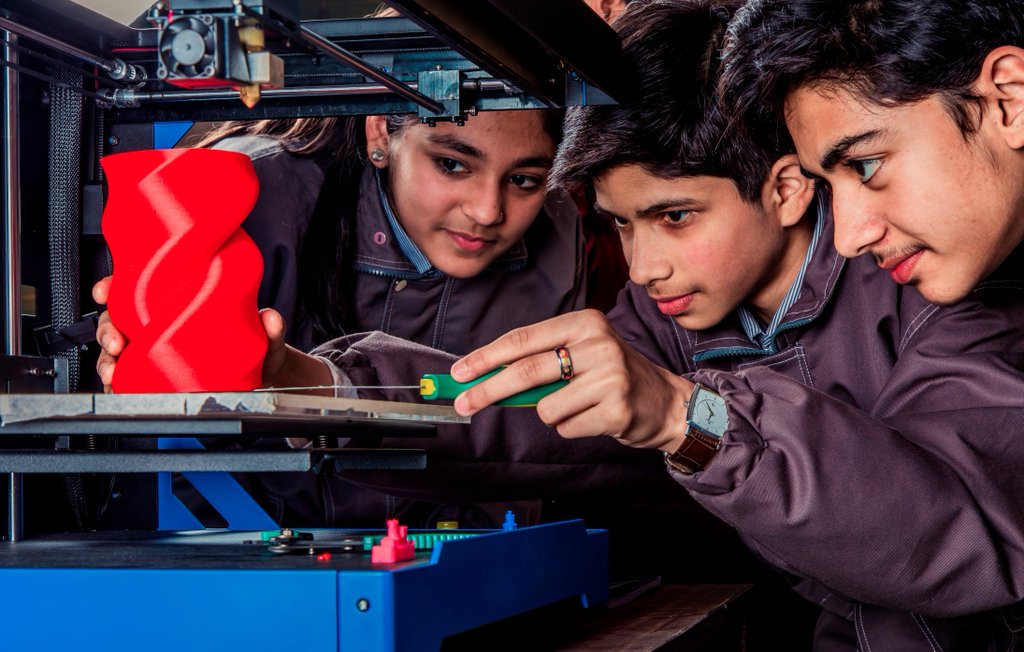
So, what is critical thinking? Critical thinking is the ability to think clearly and logically and to apply reasoning processes to ideas and situations. Critical thinkers ask questions and challenge information they are presented with. They seek to understand information from a range of perspectives, rather than jumping to conclusions and taking everything at face value.
Here we will look at ways that 3D design and printing can help our students develop these skills.
By Mandi Dimitriadis
1. Understand The Links Between Ideas
By providing a 3D design environment for students to create and invent in, Makers Empire challenges students to represent their ideas in a different way and asks them to move between abstract ideas, 2D, and 3D representations. Teachers have told us that when they ask students to sketch their ideas on paper before designing them in 3D, students think in deeper ways, move between the two design environments and work hard at transferring their thinking from one place to another.
2. Determine The Importance And Relevance Of Arguments And Ideas
When used in collaboration with others, 3D design projects provide great contexts for students to give and receive feedback that helps them to further develop, evaluate and improve their designs. If clear design criteria are developed through the investigation and interpretation of a problem or opportunity, students can give and receive focused feedback and suggestions referenced against specific desired design outcomes.
3. Recognise, Build And Appraise Arguments
3D design and printing offer many opportunities for students to construct positional arguments and appraise the solutions produced by others. We’ve seen some great examples, where students have developed persuasive arguments for why their design should be chosen as the one to be 3D printed. They need to demonstrate how their design best meets the agreed design criteria or best solves a problem.
4. Identify Inconsistencies And Errors In Reasoning
3D printing is a great tool for producing prototypes of products for the purpose of testing and evaluating a design’s success in solving a problem or addressing the need. Testing a 3D printed prototype, not only enables students to test the functionality of their design, but also gather information on how well they have interpreted the design brief? Have they made assumptions? Are their ideas actually going to solve the problem in satisfactory ways? Or will their solution cause other problems?
5. Approach Problems In A Consistent And Systematic Way
In conjunction with design thinking process, 3D design and printing provide students with tools to approach problems in systematic, logical ways. Students start by identifying and interpreting a need or opportunity. They visualize approaches and generate ideas. These ideas drive the production of products and solutions which are then evaluated and improved in an iterative cycle.
6. Reflect On The Justification Of Their Own Assumptions, Beliefs, And Values
Makers Empire 3D: Schools learning program supports teachers to engage their students in all aspects of authentic design experiences. An important element of the design thinking process is for students to understand the needs of the individual or group they are designing solutions for. They need to understand the experience of others and develop empathy for others. When viewing situations and problems from the perspective of others, students are required to think outside their own values and beliefs and challenge assumptions.
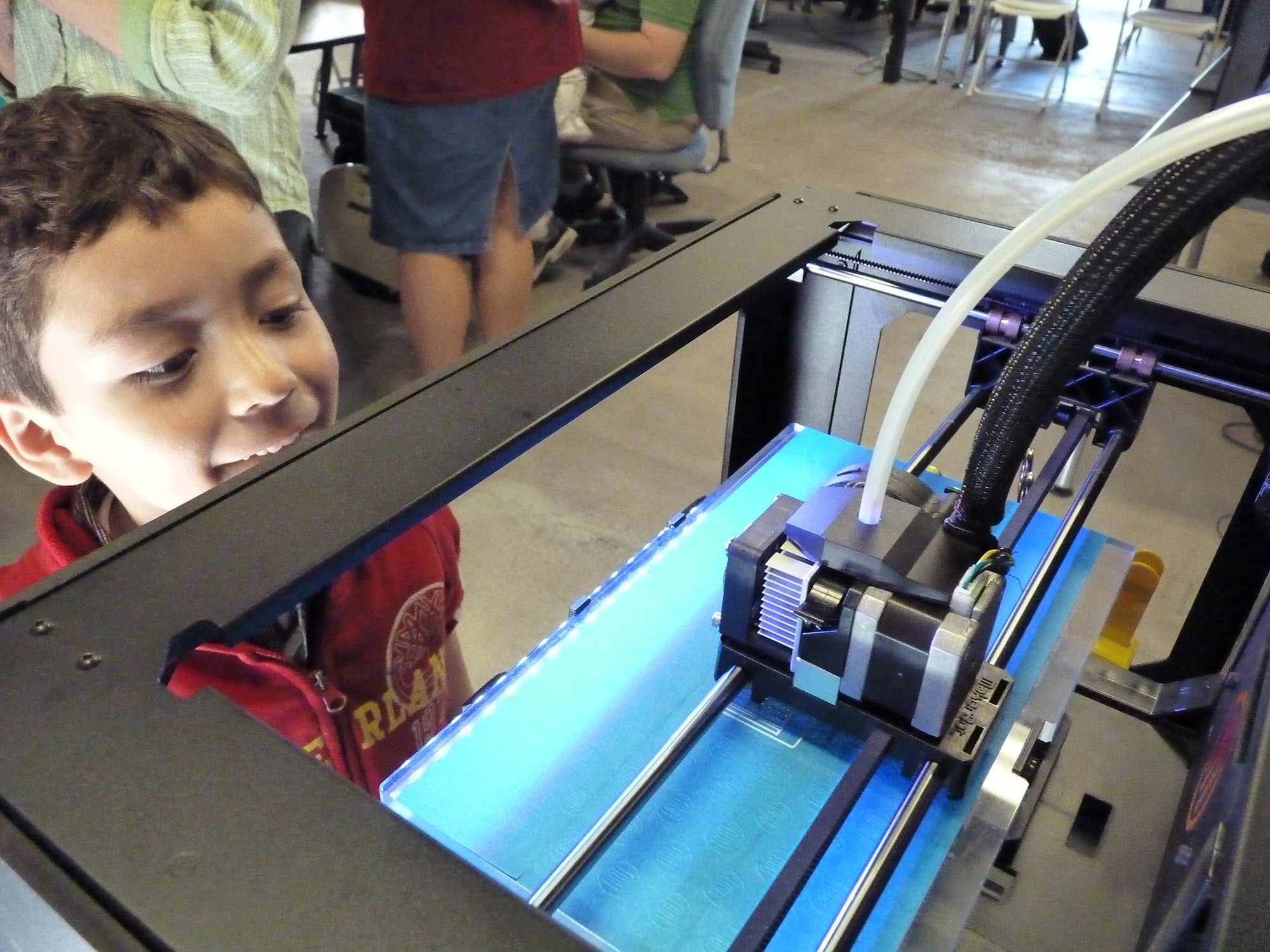
Discover more about 3D Printing with RobotLAB!
Check our products page and start planning your STEM lessons with RobotLAB! and our learning Platform EngageK12!

This article is original from Makers Empire: https://www.makersempire.com/6-ways-3d-printing-helps-students-develop-critical-thinking-skills/
About The Author:
Mandi Dimitriadis, DipT. is an experienced classroom teacher who recognizes the power of technology to enhance teaching and improve educational outcomes. Mandi has extensive experience with curriculum development and learning, having previously developed programs for the Australian Government’s Department of Education. She is passionate about Design Thinking and how best to prepare today’s students for the future.
- Jul 10, 2019 9:03:59 AM
- Posted by Maria Alejandra Calcetero
- Topics: EdTech , STEM , Technology , STEMchat , 3D-Printer
3D printing as an educational technology: theoretical perspectives, learning outcomes, and recommendations for practice
- Published: 06 September 2021
- Volume 27 , pages 3037–3064, ( 2022 )
Cite this article

- Heather Ann Pearson 1 &
- Adam Kenneth Dubé ORCID: orcid.org/0000-0001-9935-8886 1
2117 Accesses
19 Citations
2 Altmetric
Explore all metrics
3D printing is an emerging educational technology that is said to prepare learners for a more technologically designed world. In this review, 3D printing studies are analyzed to identify the dominant theoretical approaches and learning outcomes associated with 3D printing in education. Five theories are identified, including situated learning (Lave & Wenger, 1991 ), experiential learning (Kolb & Kolb Academy of Management Learning & Education, 4, 193- 212, Kolb & Kolb, 2005 ), and critical making (Ratto in The Information Society, 27, 252-260, 2011 ), but concepts from constructionism (Papert & Harel Constructionism , 36 , 1-11, 1991 ) and self-directed learning (Garrison Adult Education Quarterly, 48 , 18-33, 1997 ; Knowles, 1975 ) are common amongst all approaches. Learning outcomes attributed to 3D printing include critical thinking, creativity, design thinking, and collaboration (Trust et al., 2018 ; Trust & Maloy Computers in the Schools: Interdisciplinary Journal of Practice, Theory, and Applied Research, 34, 253-266, 2017 ), with proponents arguing that the domain general outcomes go beyond knowing simply how to use a 3D printer. Given the identified, theoretical approaches, outcomes, and common barriers to use, recommendations are made for how educators approach and implement 3D printing in the classroom.
This is a preview of subscription content, log in via an institution to check access.
Access this article
Price includes VAT (Russian Federation)
Instant access to the full article PDF.
Rent this article via DeepDyve
Institutional subscriptions
Similar content being viewed by others

Play-Based Learning: Evidence-Based Research to Improve Children’s Learning Experiences in the Kindergarten Classroom
Ai and education: the importance of teacher and student relations.
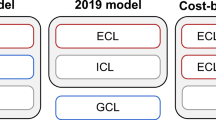
Understanding Cognitive Load in Digital and Online Learning: a New Perspective on Extraneous Cognitive Load
Abouhashem, Y., Savanah, S., Dayal, M., & Strkalj, G. (2015). The application of 3D printing in anatomy education. Medical Education Online, 20 (1) https://doi.org/10.3402/meo.v20.29847
Ackermann, E. (2001). Piaget’s constructivism, Papert’s constructionism: What’s the difference. Future of learning group publication, 5 , 3.
Google Scholar
Ainley, J., Pratt, D., & Hansen, A. (2006). Connecting engagement and focus in pedagogic task design. British Educational Research Journal, 32 , 23–38.
Article Google Scholar
Assante, D., Cennamo, G. M., & Placidi, L. (2020). 3D printing in education: An European perspective. Proceedings from 2020 IEEE global engineering education conference (EDUCON).
Brockett, R. G., & Hiemstra, R. (1991). Self-direction in adult learning: Perspectives on theory, research, and practice . Routledge.
Buehler, E., Comrie, N., Hofmann, M., McDonald, S., & Hurst, A. (2016). Investigating the implications of 3D printing in special education. ACM Transactions on Accessible Computing, 8 , 1–28. https://doi.org/10.1145/287064
Chen, Y.-H. & Chang, P.-L. (2018). 3D printing assisted in art education: Study on the effectiveness of visually impaired students in space learning. In Meen, prior, & lam (Eds.), IEEE international conference on applied system innovation 2018.
Chien, Y.-H., & Chu, P.-Y. (2017). The different learning outcomes of high school and college students on a 3D-printing STEAM engineering design curriculum. International Journal of Science and Mathematics Education, 16 , 1047–1064. https://doi.org/10.1007/s10763-017-9832-4
Clark, R. E. (1994). Media will never influence learning. Educational Technology Research & Development, 42 , 21–29.
Cohen, J. D., Huprich, J., Jones, W. M., & Smith, S. (2017). Educators’ perceptions of a maker-based learning experience. The International Journal of Information and Learning Technology, 34 , 428–438. https://doi.org/10.1108/IJILT-06-2017-0050
Cook, K. L., Bush, S. B., & Cox, R. (2015). Creating a prosthetic hand: 3D printers innovate and inspire a maker movement. Science and Children, 53 , 80–86.
Dewey, J. (1938). Experience & education . Macmillan.
Du Toit-Brits, C., & van Zyl, C.-M. (2017). Self-directed learning characteristics: Making learning personal, empowering and successful. Africa Education Review, 14 , 122–141. https://doi.org/10.1080/18146627.2016.1267576
Eisenberg, M. (2013). 3D printing for children: What to build next? International Journal of Child-Computer Interaction, 1 , 7–13. https://doi.org/10.1016/j.ijcci.2012.08.004
Engeström, Y. (1999). Activity theory and individual and social transformation. In Y. Engeström, R. Miettinen, & R. L. Punamäki (Eds.), Perspectives on activity theory . Cambridge University Press.
Chapter Google Scholar
Fischer, G., & Scharff, E. (1998). Learning technologies in support of self-directed learning. Journal of Interactive Media in Education , 2. https://doi.org/10.5334/1998-4
Freire, P. (1972). Pedagogy of the oppressed . Herder and Herder.
Garas, M., Vaccarezza, M., Newland, G., McVay-Doornbusch, K., & Hasani, J. (2018). 3D-printed specimens as a valuable tool in anatomy education: A pilot study. Annals of Anatomy, 219 , 57–64. https://doi.org/10.1016/j.aanat.2018.05.006
Garrison, D. R. (1997). Self-directed learning: Toward a comprehensive model. Adult Education Quarterly, 48 , 18–33.
Greenhalgh, S. (2016). The effects of 3D printing in design thinking and design education. Journal of Engineering, Design and Technology, 14 (4), 752–769. https://doi.org/10.1108/JEDT-02-2014-0005
Gureckis, T. M., & Markant, D. (2012). Self-directed learning: A cognitive and computational perspective. Perspectives on Psychological Science, 7 , 464–481. https://doi.org/10.1177/1745691612454304
Hanover Research (2017). The Digital Divide: Technology Integration in School Districts. Retrieved from https://www.hanoverresearch.com/reports-and-briefs/research-brief-the-digital-divide-technology-integration-in-school-districts/
Hanover Research (2019). Trends in K-12 Education. Retrieved from https://www.hanoverresearch.com/reports-and-briefs/trends-k-12-education-2019/
Horowitz, S. S., & Schultz, P. H. (2014). Printing space: Using 3D printing of digital terrain models in geosciences education and research. Journal of Geoscience Education, 62 , 138–145.
Hoyles, C., & Noss, R. (1987). Synthesizing mathematical conceptions and their formalization through the construction of logo-based school mathematics curriculum. International Journal of Mathematical Education in Science and Technology, 18 , 581–595. https://doi.org/10.1080/0020739870180411
Hsiao, H.-S., Chen, J.-C., Lin, C.-Y., Zhuo, P.-W., & Lin, K.-Y. (2019). Using 3D printing technology with experiential learning strategies to improve preengineering students’ comprehension of abstract scientific concepts and hands-on ability. Journal of Computer Assisted Learning, 35 , 178–187. https://doi.org/10.1111/jcal.12319
Huang, T.-C., & Lin, C.-Y. (2017). From 3D modeling to 3D printing: Development of differentiated spatial ability teaching model. Telematics and Informatics, 34 , 604–613. https://doi.org/10.1016/j.tele.2016.10.005
Hughes, J. M. (2017). Digital making with “at-risk” youth. The International Journal of Information and Learning Technology, 34 , 102–113. https://doi.org/10.1108/IJILT-08-2016-0037
Lave, J., & Wenger, E. (1991). Situated learning: Legitimate peripheral participation . Cambridge University Press.
Book Google Scholar
Liu, B., Wu, Y., Xing, W., Guo, S., & Zhu, L. (2020). The role of self-directed learning in studying 3D design and modeling. Interactive Learning Environments, 1–4. https://doi.org/10.1080/10494820.2020.1855208
Loyens, S. M. M., Magda, J., & Rikers, R. M. J. P. (2008). Self-directed learning in problem-based learning and its relationships with self-regulated learning. Educational Psychology Review, 20 , 411–427. https://doi.org/10.1007/s10648-008-9082-7
Jones, W. M., Smith, S., & Cohen, J. (2017). Preservice teachers’ beliefs about using maker activities in formal K-12 educational settings: A multi-institutional study. Journal of Research on Technology in Education, 49 , 134–148. https://doi.org/10.1080/15391523.2017.1318097
Katsioloudis, P. & Jones, M. (2015). Using computer-aided design software and 3D printers to improve spatial visualization. Technology and engineering teacher, 14-20.
Kaya, E., Newley, A., Yesilyurt, E., & Deniz, H. (2019). Improving preservice elementary teachers’ engineering teaching efficacy beliefs with 3D design and printing. Journal of College Science Teaching, 48 , 76–83.
Knowles, M. (1975). Self-directed learning: A guide for learners and teachers . Association Press.
Kolb, A. Y., & Kolb, D. A. (2005). Learning styles and learning spaces: Enhancing experiential learning in higher education. Academy of Management Learning & Education, 4 , 193–212.
Kostakis, V., Niaros, V., & Giotitsas, C. (2015). Open source 3D printing as a means of learning: An educational experiment in two high schools in Greece. Telematics and Informatics, 32 , 118–128. https://doi.org/10.1016/j.tele.2014.05.001
Krathwohl, D. R. (2002). A revision of Bloom’s taxonomy: An overview. Theory Into Practice, 41 , 212–218.
Loy, J. (2014). eLearning and eMaking: 3D printing blurring the digital and the physical. Education Sciences, 4 , 108–121. https://doi.org/10.3390/educsci4010108
Martin, L. (2015). The promise of the maker movement for education. Journal of Pre-College Engineering Education Research (J-PEER), 5 , 30–39. https://doi.org/10.7771/2157-9288.1099
Martin, R. L., Bowden, N. S., & Merrill, C. (2014). 3D printing in technology and engineering education. Technology and Engineering Teacher, 30–35.
McGahern, P., Bosch, F., & Poli, D. (2015). Enhancing learning using 3D printing: An alternative to traditional project methods. The American Biology Teacher, 77 , 376–377.
McMenamin, P. G., Quayle, M. R., McHenry, C. R., & Adams, J. W. (2014). The production of anatomical teaching resources using three-dimensional (3D) printing technology. Anatomical sciences education, 1-8. doi: https://doi.org/10.1002/ase.1475 .
Mezirow, J. (1990). Fostering critical reflection in adulthood (pp. 1-18). San Francisco: Jossey-bass publishers.
Mezirow, J. (1985). A critical theory of self-directed learning. In S. Brookfield (Ed.), Self-directed learning: From theory to practice (pp. 17–30). Jossey-Bass.
Nemorin, S., & Selwyn, N. (2017). Making the best of it? Exploring the realities of 3D printing in school. Research Papers in Education, 32 , 578–595. https://doi.org/10.1080/02671522.2016.1225802
Noss, R., & Clayson, J. (2015). Reconstructing constructionism. Constructivists Foundations, 10 (3).
Novak, E., & Wisdom, S. (2018). Effects of 3D printing project-based learning on preservice elementary teachers’ science attitudes, science content knowledge, and anxiety about teaching science. Journal of Science Education and Technology, 27 , 412–432.
Pantazis, A., & Priavolou, C. (2017). 3D printing as a means of learning and communication: The 3Ducation project revisited. Telematics and Informatics, 34 , 1465–1476. https://doi.org/10.1016/j.tele.2017.06.010
Papert, S. (1972a). Teaching children thinking. Programmed Learning and Educational Technology, 9 , 245–255. https://doi.org/10.1080/1355800720990503
Papert, S. (1972b). Teaching children to be mathematicians versus teaching about mathematics. International Journal of Mathematical Education in Science and Technology, 3 , 249–262. https://doi.org/10.1080/0020739700030306
Papert, S., & Harel, I. (1991). Situating constructionism. Constructionism, 36 , 1–11.
Papp, I., Tornai, R., & Zichar, M. (2016). What 3D printing technologies can bring to education: The impacts of acquiring a 3D printer. Proceedings from 7th IEEE international conference on cognitive Infocommunications .
Ratto, M. (2011). Critical making: Conceptual and material studies in technology and social life. The Information Society, 27 , 252–260. https://doi.org/10.1080/01972243.2011.583819
Ratto, M. & Ree, R. (2012). Materializing information: 3D printing and social change. First Monday, 17 . Retrieved from: https://journals.uic.edu/ojs/index.php/fm/article/view/3968/3273
Schelly, C., Anzalone, G., Wijnen, B., & Pearce, J. M. (2015). Open-source 3D printing technologies for education: Bringing additive manufacturing to the classroom. Journal of Visual Languages and Computing, 28 , 226–237. https://doi.org/10.1016/j.jvlc.2015.01.004
Smiar, K., & Mendez, J. D. (2016). Creating and using interactive, 3-D printed models to improve student comprehension of the Bohr model of the atom, bond polarity, and hybridization. Journal of Chemical Education, 93 , 1591–1594. https://doi.org/10.1021/acs.jchemed.6b00297
Smith, S. (2018). Children’s negotiations of visualization skills during a design-based learning experience using nondigital and digital techniques. The Interdisciplinary Journal of Problem-Based Learning, 12 (2), 1–16. https://doi.org/10.7771/1541-5015.1747
Stangl, A., Kim, J., & Yeh, T. (2014). 3D printed tactile picture books for children with visual impairments: A design probe. ACM International Conference Proceeding Series , (January 2017), 321–324. https://doi.org/10.1145/2593968.2610482
Stone, B., Kay, D., Reynolds, A., & Brown, D. (2020). 3D printing and service learning: Accessible open educational resources for students with visual impairment. International Journal of Teaching and Learning in Higher Education, 32 (2), 336–346.
Sun, Y., & Li, Q. (2017). The application of 3D printing in mathematics education. Proceedings from the 12th international conference on Computer Science & Education.
Sun, Y. & Li, Q. (2018). The application of 3D printing in STEM education. In Meen, prior, & lam (Eds.), IEEE international conference on applied system innovation 2018 .
Tekkol, I. A., & Demirel, M. (2018). An investigation of self-directed learning skills of undergraduate students. Frontiers in Psychology, 9 , 1–14.
Trust, T., & Maloy, R. W. (2017). Why 3D print? The 21 st -century skills students develop while engaging in 3D printing projects. Computers in the Schools: Interdisciplinary Journal of Practice, Theory, and Applied Research, 34 , 253–266. https://doi.org/10.1080/07380569.2017.1384684
Trust, T., Maloy, R. W., & Edwards, S. (2018). Learning through making: Emerging and expanding designs for college classes. TechTrends, 62 , 19–28.
Turner, H., Resch, G., Southwick, D., McEwen, R., Dubé, A. K., & Record, I. (2017). Using 3D printing to enhance understanding and engagement with young audiences: Lessons from workshops in a museum. Curator: The Museum Journal, 60 , 311–333.
Wright, L., Shaw, D., Gaidos, K., Lyman, G., & Sorey, T. (2018). 3D pit stop printing: A student competition supports engineering design. Science and Children, 55 , 55–63.
Yeoh, M. P., Cazan, A.-M., Ierardi, E., & Jacić, L. A. (2017). Facilitating self-directed learning (SDL) and satisfaction among pre-university students. Educational Studies, 43 , 584–599.
Download references
Author information
Authors and affiliations.
Department of Educational & Counselling Psychology, McGill University, 3700 McTavish Street, Montreal, QC, H3A 1Y2, Canada
Heather Ann Pearson & Adam Kenneth Dubé
You can also search for this author in PubMed Google Scholar
Corresponding author
Correspondence to Adam Kenneth Dubé .
Additional information
Publisher’s note.
Springer Nature remains neutral with regard to jurisdictional claims in published maps and institutional affiliations.
Rights and permissions
Reprints and permissions
About this article
Pearson, H.A., Dubé, A.K. 3D printing as an educational technology: theoretical perspectives, learning outcomes, and recommendations for practice. Educ Inf Technol 27 , 3037–3064 (2022). https://doi.org/10.1007/s10639-021-10733-7
Download citation
Received : 29 January 2021
Accepted : 26 August 2021
Published : 06 September 2021
Issue Date : April 2022
DOI : https://doi.org/10.1007/s10639-021-10733-7
Share this article
Anyone you share the following link with will be able to read this content:
Sorry, a shareable link is not currently available for this article.
Provided by the Springer Nature SharedIt content-sharing initiative
- 3D printing
- Self-directed learning
- Constructionism
- Educational technology
- Critical making
- Find a journal
- Publish with us
- Track your research

- Table of Contents
- Random Entry
- Chronological
- Editorial Information
- About the SEP
- Editorial Board
- How to Cite the SEP
- Special Characters
- Advanced Tools
- Support the SEP
- PDFs for SEP Friends
- Make a Donation
- SEPIA for Libraries
- Entry Contents
Bibliography
Academic tools.
- Friends PDF Preview
- Author and Citation Info
- Back to Top
Critical Thinking
Critical thinking is a widely accepted educational goal. Its definition is contested, but the competing definitions can be understood as differing conceptions of the same basic concept: careful thinking directed to a goal. Conceptions differ with respect to the scope of such thinking, the type of goal, the criteria and norms for thinking carefully, and the thinking components on which they focus. Its adoption as an educational goal has been recommended on the basis of respect for students’ autonomy and preparing students for success in life and for democratic citizenship. “Critical thinkers” have the dispositions and abilities that lead them to think critically when appropriate. The abilities can be identified directly; the dispositions indirectly, by considering what factors contribute to or impede exercise of the abilities. Standardized tests have been developed to assess the degree to which a person possesses such dispositions and abilities. Educational intervention has been shown experimentally to improve them, particularly when it includes dialogue, anchored instruction, and mentoring. Controversies have arisen over the generalizability of critical thinking across domains, over alleged bias in critical thinking theories and instruction, and over the relationship of critical thinking to other types of thinking.
2.1 Dewey’s Three Main Examples
2.2 dewey’s other examples, 2.3 further examples, 2.4 non-examples, 3. the definition of critical thinking, 4. its value, 5. the process of thinking critically, 6. components of the process, 7. contributory dispositions and abilities, 8.1 initiating dispositions, 8.2 internal dispositions, 9. critical thinking abilities, 10. required knowledge, 11. educational methods, 12.1 the generalizability of critical thinking, 12.2 bias in critical thinking theory and pedagogy, 12.3 relationship of critical thinking to other types of thinking, other internet resources, related entries.
Use of the term ‘critical thinking’ to describe an educational goal goes back to the American philosopher John Dewey (1910), who more commonly called it ‘reflective thinking’. He defined it as
active, persistent and careful consideration of any belief or supposed form of knowledge in the light of the grounds that support it, and the further conclusions to which it tends. (Dewey 1910: 6; 1933: 9)
and identified a habit of such consideration with a scientific attitude of mind. His lengthy quotations of Francis Bacon, John Locke, and John Stuart Mill indicate that he was not the first person to propose development of a scientific attitude of mind as an educational goal.
In the 1930s, many of the schools that participated in the Eight-Year Study of the Progressive Education Association (Aikin 1942) adopted critical thinking as an educational goal, for whose achievement the study’s Evaluation Staff developed tests (Smith, Tyler, & Evaluation Staff 1942). Glaser (1941) showed experimentally that it was possible to improve the critical thinking of high school students. Bloom’s influential taxonomy of cognitive educational objectives (Bloom et al. 1956) incorporated critical thinking abilities. Ennis (1962) proposed 12 aspects of critical thinking as a basis for research on the teaching and evaluation of critical thinking ability.
Since 1980, an annual international conference in California on critical thinking and educational reform has attracted tens of thousands of educators from all levels of education and from many parts of the world. Also since 1980, the state university system in California has required all undergraduate students to take a critical thinking course. Since 1983, the Association for Informal Logic and Critical Thinking has sponsored sessions in conjunction with the divisional meetings of the American Philosophical Association (APA). In 1987, the APA’s Committee on Pre-College Philosophy commissioned a consensus statement on critical thinking for purposes of educational assessment and instruction (Facione 1990a). Researchers have developed standardized tests of critical thinking abilities and dispositions; for details, see the Supplement on Assessment . Educational jurisdictions around the world now include critical thinking in guidelines for curriculum and assessment.
For details on this history, see the Supplement on History .
2. Examples and Non-Examples
Before considering the definition of critical thinking, it will be helpful to have in mind some examples of critical thinking, as well as some examples of kinds of thinking that would apparently not count as critical thinking.
Dewey (1910: 68–71; 1933: 91–94) takes as paradigms of reflective thinking three class papers of students in which they describe their thinking. The examples range from the everyday to the scientific.
Transit : “The other day, when I was down town on 16th Street, a clock caught my eye. I saw that the hands pointed to 12:20. This suggested that I had an engagement at 124th Street, at one o’clock. I reasoned that as it had taken me an hour to come down on a surface car, I should probably be twenty minutes late if I returned the same way. I might save twenty minutes by a subway express. But was there a station near? If not, I might lose more than twenty minutes in looking for one. Then I thought of the elevated, and I saw there was such a line within two blocks. But where was the station? If it were several blocks above or below the street I was on, I should lose time instead of gaining it. My mind went back to the subway express as quicker than the elevated; furthermore, I remembered that it went nearer than the elevated to the part of 124th Street I wished to reach, so that time would be saved at the end of the journey. I concluded in favor of the subway, and reached my destination by one o’clock.” (Dewey 1910: 68–69; 1933: 91–92)
Ferryboat : “Projecting nearly horizontally from the upper deck of the ferryboat on which I daily cross the river is a long white pole, having a gilded ball at its tip. It suggested a flagpole when I first saw it; its color, shape, and gilded ball agreed with this idea, and these reasons seemed to justify me in this belief. But soon difficulties presented themselves. The pole was nearly horizontal, an unusual position for a flagpole; in the next place, there was no pulley, ring, or cord by which to attach a flag; finally, there were elsewhere on the boat two vertical staffs from which flags were occasionally flown. It seemed probable that the pole was not there for flag-flying.
“I then tried to imagine all possible purposes of the pole, and to consider for which of these it was best suited: (a) Possibly it was an ornament. But as all the ferryboats and even the tugboats carried poles, this hypothesis was rejected. (b) Possibly it was the terminal of a wireless telegraph. But the same considerations made this improbable. Besides, the more natural place for such a terminal would be the highest part of the boat, on top of the pilot house. (c) Its purpose might be to point out the direction in which the boat is moving.
“In support of this conclusion, I discovered that the pole was lower than the pilot house, so that the steersman could easily see it. Moreover, the tip was enough higher than the base, so that, from the pilot’s position, it must appear to project far out in front of the boat. Moreover, the pilot being near the front of the boat, he would need some such guide as to its direction. Tugboats would also need poles for such a purpose. This hypothesis was so much more probable than the others that I accepted it. I formed the conclusion that the pole was set up for the purpose of showing the pilot the direction in which the boat pointed, to enable him to steer correctly.” (Dewey 1910: 69–70; 1933: 92–93)
Bubbles : “In washing tumblers in hot soapsuds and placing them mouth downward on a plate, bubbles appeared on the outside of the mouth of the tumblers and then went inside. Why? The presence of bubbles suggests air, which I note must come from inside the tumbler. I see that the soapy water on the plate prevents escape of the air save as it may be caught in bubbles. But why should air leave the tumbler? There was no substance entering to force it out. It must have expanded. It expands by increase of heat, or by decrease of pressure, or both. Could the air have become heated after the tumbler was taken from the hot suds? Clearly not the air that was already entangled in the water. If heated air was the cause, cold air must have entered in transferring the tumblers from the suds to the plate. I test to see if this supposition is true by taking several more tumblers out. Some I shake so as to make sure of entrapping cold air in them. Some I take out holding mouth downward in order to prevent cold air from entering. Bubbles appear on the outside of every one of the former and on none of the latter. I must be right in my inference. Air from the outside must have been expanded by the heat of the tumbler, which explains the appearance of the bubbles on the outside. But why do they then go inside? Cold contracts. The tumbler cooled and also the air inside it. Tension was removed, and hence bubbles appeared inside. To be sure of this, I test by placing a cup of ice on the tumbler while the bubbles are still forming outside. They soon reverse” (Dewey 1910: 70–71; 1933: 93–94).
Dewey (1910, 1933) sprinkles his book with other examples of critical thinking. We will refer to the following.
Weather : A man on a walk notices that it has suddenly become cool, thinks that it is probably going to rain, looks up and sees a dark cloud obscuring the sun, and quickens his steps (1910: 6–10; 1933: 9–13).
Disorder : A man finds his rooms on his return to them in disorder with his belongings thrown about, thinks at first of burglary as an explanation, then thinks of mischievous children as being an alternative explanation, then looks to see whether valuables are missing, and discovers that they are (1910: 82–83; 1933: 166–168).
Typhoid : A physician diagnosing a patient whose conspicuous symptoms suggest typhoid avoids drawing a conclusion until more data are gathered by questioning the patient and by making tests (1910: 85–86; 1933: 170).
Blur : A moving blur catches our eye in the distance, we ask ourselves whether it is a cloud of whirling dust or a tree moving its branches or a man signaling to us, we think of other traits that should be found on each of those possibilities, and we look and see if those traits are found (1910: 102, 108; 1933: 121, 133).
Suction pump : In thinking about the suction pump, the scientist first notes that it will draw water only to a maximum height of 33 feet at sea level and to a lesser maximum height at higher elevations, selects for attention the differing atmospheric pressure at these elevations, sets up experiments in which the air is removed from a vessel containing water (when suction no longer works) and in which the weight of air at various levels is calculated, compares the results of reasoning about the height to which a given weight of air will allow a suction pump to raise water with the observed maximum height at different elevations, and finally assimilates the suction pump to such apparently different phenomena as the siphon and the rising of a balloon (1910: 150–153; 1933: 195–198).
Diamond : A passenger in a car driving in a diamond lane reserved for vehicles with at least one passenger notices that the diamond marks on the pavement are far apart in some places and close together in others. Why? The driver suggests that the reason may be that the diamond marks are not needed where there is a solid double line separating the diamond lane from the adjoining lane, but are needed when there is a dotted single line permitting crossing into the diamond lane. Further observation confirms that the diamonds are close together when a dotted line separates the diamond lane from its neighbour, but otherwise far apart.
Rash : A woman suddenly develops a very itchy red rash on her throat and upper chest. She recently noticed a mark on the back of her right hand, but was not sure whether the mark was a rash or a scrape. She lies down in bed and thinks about what might be causing the rash and what to do about it. About two weeks before, she began taking blood pressure medication that contained a sulfa drug, and the pharmacist had warned her, in view of a previous allergic reaction to a medication containing a sulfa drug, to be on the alert for an allergic reaction; however, she had been taking the medication for two weeks with no such effect. The day before, she began using a new cream on her neck and upper chest; against the new cream as the cause was mark on the back of her hand, which had not been exposed to the cream. She began taking probiotics about a month before. She also recently started new eye drops, but she supposed that manufacturers of eye drops would be careful not to include allergy-causing components in the medication. The rash might be a heat rash, since she recently was sweating profusely from her upper body. Since she is about to go away on a short vacation, where she would not have access to her usual physician, she decides to keep taking the probiotics and using the new eye drops but to discontinue the blood pressure medication and to switch back to the old cream for her neck and upper chest. She forms a plan to consult her regular physician on her return about the blood pressure medication.
Candidate : Although Dewey included no examples of thinking directed at appraising the arguments of others, such thinking has come to be considered a kind of critical thinking. We find an example of such thinking in the performance task on the Collegiate Learning Assessment (CLA+), which its sponsoring organization describes as
a performance-based assessment that provides a measure of an institution’s contribution to the development of critical-thinking and written communication skills of its students. (Council for Aid to Education 2017)
A sample task posted on its website requires the test-taker to write a report for public distribution evaluating a fictional candidate’s policy proposals and their supporting arguments, using supplied background documents, with a recommendation on whether to endorse the candidate.
Immediate acceptance of an idea that suggests itself as a solution to a problem (e.g., a possible explanation of an event or phenomenon, an action that seems likely to produce a desired result) is “uncritical thinking, the minimum of reflection” (Dewey 1910: 13). On-going suspension of judgment in the light of doubt about a possible solution is not critical thinking (Dewey 1910: 108). Critique driven by a dogmatically held political or religious ideology is not critical thinking; thus Paulo Freire (1968 [1970]) is using the term (e.g., at 1970: 71, 81, 100, 146) in a more politically freighted sense that includes not only reflection but also revolutionary action against oppression. Derivation of a conclusion from given data using an algorithm is not critical thinking.
What is critical thinking? There are many definitions. Ennis (2016) lists 14 philosophically oriented scholarly definitions and three dictionary definitions. Following Rawls (1971), who distinguished his conception of justice from a utilitarian conception but regarded them as rival conceptions of the same concept, Ennis maintains that the 17 definitions are different conceptions of the same concept. Rawls articulated the shared concept of justice as
a characteristic set of principles for assigning basic rights and duties and for determining… the proper distribution of the benefits and burdens of social cooperation. (Rawls 1971: 5)
Bailin et al. (1999b) claim that, if one considers what sorts of thinking an educator would take not to be critical thinking and what sorts to be critical thinking, one can conclude that educators typically understand critical thinking to have at least three features.
- It is done for the purpose of making up one’s mind about what to believe or do.
- The person engaging in the thinking is trying to fulfill standards of adequacy and accuracy appropriate to the thinking.
- The thinking fulfills the relevant standards to some threshold level.
One could sum up the core concept that involves these three features by saying that critical thinking is careful goal-directed thinking. This core concept seems to apply to all the examples of critical thinking described in the previous section. As for the non-examples, their exclusion depends on construing careful thinking as excluding jumping immediately to conclusions, suspending judgment no matter how strong the evidence, reasoning from an unquestioned ideological or religious perspective, and routinely using an algorithm to answer a question.
If the core of critical thinking is careful goal-directed thinking, conceptions of it can vary according to its presumed scope, its presumed goal, one’s criteria and threshold for being careful, and the thinking component on which one focuses. As to its scope, some conceptions (e.g., Dewey 1910, 1933) restrict it to constructive thinking on the basis of one’s own observations and experiments, others (e.g., Ennis 1962; Fisher & Scriven 1997; Johnson 1992) to appraisal of the products of such thinking. Ennis (1991) and Bailin et al. (1999b) take it to cover both construction and appraisal. As to its goal, some conceptions restrict it to forming a judgment (Dewey 1910, 1933; Lipman 1987; Facione 1990a). Others allow for actions as well as beliefs as the end point of a process of critical thinking (Ennis 1991; Bailin et al. 1999b). As to the criteria and threshold for being careful, definitions vary in the term used to indicate that critical thinking satisfies certain norms: “intellectually disciplined” (Scriven & Paul 1987), “reasonable” (Ennis 1991), “skillful” (Lipman 1987), “skilled” (Fisher & Scriven 1997), “careful” (Bailin & Battersby 2009). Some definitions specify these norms, referring variously to “consideration of any belief or supposed form of knowledge in the light of the grounds that support it and the further conclusions to which it tends” (Dewey 1910, 1933); “the methods of logical inquiry and reasoning” (Glaser 1941); “conceptualizing, applying, analyzing, synthesizing, and/or evaluating information gathered from, or generated by, observation, experience, reflection, reasoning, or communication” (Scriven & Paul 1987); the requirement that “it is sensitive to context, relies on criteria, and is self-correcting” (Lipman 1987); “evidential, conceptual, methodological, criteriological, or contextual considerations” (Facione 1990a); and “plus-minus considerations of the product in terms of appropriate standards (or criteria)” (Johnson 1992). Stanovich and Stanovich (2010) propose to ground the concept of critical thinking in the concept of rationality, which they understand as combining epistemic rationality (fitting one’s beliefs to the world) and instrumental rationality (optimizing goal fulfillment); a critical thinker, in their view, is someone with “a propensity to override suboptimal responses from the autonomous mind” (2010: 227). These variant specifications of norms for critical thinking are not necessarily incompatible with one another, and in any case presuppose the core notion of thinking carefully. As to the thinking component singled out, some definitions focus on suspension of judgment during the thinking (Dewey 1910; McPeck 1981), others on inquiry while judgment is suspended (Bailin & Battersby 2009, 2021), others on the resulting judgment (Facione 1990a), and still others on responsiveness to reasons (Siegel 1988). Kuhn (2019) takes critical thinking to be more a dialogic practice of advancing and responding to arguments than an individual ability.
In educational contexts, a definition of critical thinking is a “programmatic definition” (Scheffler 1960: 19). It expresses a practical program for achieving an educational goal. For this purpose, a one-sentence formulaic definition is much less useful than articulation of a critical thinking process, with criteria and standards for the kinds of thinking that the process may involve. The real educational goal is recognition, adoption and implementation by students of those criteria and standards. That adoption and implementation in turn consists in acquiring the knowledge, abilities and dispositions of a critical thinker.
Conceptions of critical thinking generally do not include moral integrity as part of the concept. Dewey, for example, took critical thinking to be the ultimate intellectual goal of education, but distinguished it from the development of social cooperation among school children, which he took to be the central moral goal. Ennis (1996, 2011) added to his previous list of critical thinking dispositions a group of dispositions to care about the dignity and worth of every person, which he described as a “correlative” (1996) disposition without which critical thinking would be less valuable and perhaps harmful. An educational program that aimed at developing critical thinking but not the correlative disposition to care about the dignity and worth of every person, he asserted, “would be deficient and perhaps dangerous” (Ennis 1996: 172).
Dewey thought that education for reflective thinking would be of value to both the individual and society; recognition in educational practice of the kinship to the scientific attitude of children’s native curiosity, fertile imagination and love of experimental inquiry “would make for individual happiness and the reduction of social waste” (Dewey 1910: iii). Schools participating in the Eight-Year Study took development of the habit of reflective thinking and skill in solving problems as a means to leading young people to understand, appreciate and live the democratic way of life characteristic of the United States (Aikin 1942: 17–18, 81). Harvey Siegel (1988: 55–61) has offered four considerations in support of adopting critical thinking as an educational ideal. (1) Respect for persons requires that schools and teachers honour students’ demands for reasons and explanations, deal with students honestly, and recognize the need to confront students’ independent judgment; these requirements concern the manner in which teachers treat students. (2) Education has the task of preparing children to be successful adults, a task that requires development of their self-sufficiency. (3) Education should initiate children into the rational traditions in such fields as history, science and mathematics. (4) Education should prepare children to become democratic citizens, which requires reasoned procedures and critical talents and attitudes. To supplement these considerations, Siegel (1988: 62–90) responds to two objections: the ideology objection that adoption of any educational ideal requires a prior ideological commitment and the indoctrination objection that cultivation of critical thinking cannot escape being a form of indoctrination.
Despite the diversity of our 11 examples, one can recognize a common pattern. Dewey analyzed it as consisting of five phases:
- suggestions , in which the mind leaps forward to a possible solution;
- an intellectualization of the difficulty or perplexity into a problem to be solved, a question for which the answer must be sought;
- the use of one suggestion after another as a leading idea, or hypothesis , to initiate and guide observation and other operations in collection of factual material;
- the mental elaboration of the idea or supposition as an idea or supposition ( reasoning , in the sense on which reasoning is a part, not the whole, of inference); and
- testing the hypothesis by overt or imaginative action. (Dewey 1933: 106–107; italics in original)
The process of reflective thinking consisting of these phases would be preceded by a perplexed, troubled or confused situation and followed by a cleared-up, unified, resolved situation (Dewey 1933: 106). The term ‘phases’ replaced the term ‘steps’ (Dewey 1910: 72), thus removing the earlier suggestion of an invariant sequence. Variants of the above analysis appeared in (Dewey 1916: 177) and (Dewey 1938: 101–119).
The variant formulations indicate the difficulty of giving a single logical analysis of such a varied process. The process of critical thinking may have a spiral pattern, with the problem being redefined in the light of obstacles to solving it as originally formulated. For example, the person in Transit might have concluded that getting to the appointment at the scheduled time was impossible and have reformulated the problem as that of rescheduling the appointment for a mutually convenient time. Further, defining a problem does not always follow after or lead immediately to an idea of a suggested solution. Nor should it do so, as Dewey himself recognized in describing the physician in Typhoid as avoiding any strong preference for this or that conclusion before getting further information (Dewey 1910: 85; 1933: 170). People with a hypothesis in mind, even one to which they have a very weak commitment, have a so-called “confirmation bias” (Nickerson 1998): they are likely to pay attention to evidence that confirms the hypothesis and to ignore evidence that counts against it or for some competing hypothesis. Detectives, intelligence agencies, and investigators of airplane accidents are well advised to gather relevant evidence systematically and to postpone even tentative adoption of an explanatory hypothesis until the collected evidence rules out with the appropriate degree of certainty all but one explanation. Dewey’s analysis of the critical thinking process can be faulted as well for requiring acceptance or rejection of a possible solution to a defined problem, with no allowance for deciding in the light of the available evidence to suspend judgment. Further, given the great variety of kinds of problems for which reflection is appropriate, there is likely to be variation in its component events. Perhaps the best way to conceptualize the critical thinking process is as a checklist whose component events can occur in a variety of orders, selectively, and more than once. These component events might include (1) noticing a difficulty, (2) defining the problem, (3) dividing the problem into manageable sub-problems, (4) formulating a variety of possible solutions to the problem or sub-problem, (5) determining what evidence is relevant to deciding among possible solutions to the problem or sub-problem, (6) devising a plan of systematic observation or experiment that will uncover the relevant evidence, (7) carrying out the plan of systematic observation or experimentation, (8) noting the results of the systematic observation or experiment, (9) gathering relevant testimony and information from others, (10) judging the credibility of testimony and information gathered from others, (11) drawing conclusions from gathered evidence and accepted testimony, and (12) accepting a solution that the evidence adequately supports (cf. Hitchcock 2017: 485).
Checklist conceptions of the process of critical thinking are open to the objection that they are too mechanical and procedural to fit the multi-dimensional and emotionally charged issues for which critical thinking is urgently needed (Paul 1984). For such issues, a more dialectical process is advocated, in which competing relevant world views are identified, their implications explored, and some sort of creative synthesis attempted.
If one considers the critical thinking process illustrated by the 11 examples, one can identify distinct kinds of mental acts and mental states that form part of it. To distinguish, label and briefly characterize these components is a useful preliminary to identifying abilities, skills, dispositions, attitudes, habits and the like that contribute causally to thinking critically. Identifying such abilities and habits is in turn a useful preliminary to setting educational goals. Setting the goals is in its turn a useful preliminary to designing strategies for helping learners to achieve the goals and to designing ways of measuring the extent to which learners have done so. Such measures provide both feedback to learners on their achievement and a basis for experimental research on the effectiveness of various strategies for educating people to think critically. Let us begin, then, by distinguishing the kinds of mental acts and mental events that can occur in a critical thinking process.
- Observing : One notices something in one’s immediate environment (sudden cooling of temperature in Weather , bubbles forming outside a glass and then going inside in Bubbles , a moving blur in the distance in Blur , a rash in Rash ). Or one notes the results of an experiment or systematic observation (valuables missing in Disorder , no suction without air pressure in Suction pump )
- Feeling : One feels puzzled or uncertain about something (how to get to an appointment on time in Transit , why the diamonds vary in spacing in Diamond ). One wants to resolve this perplexity. One feels satisfaction once one has worked out an answer (to take the subway express in Transit , diamonds closer when needed as a warning in Diamond ).
- Wondering : One formulates a question to be addressed (why bubbles form outside a tumbler taken from hot water in Bubbles , how suction pumps work in Suction pump , what caused the rash in Rash ).
- Imagining : One thinks of possible answers (bus or subway or elevated in Transit , flagpole or ornament or wireless communication aid or direction indicator in Ferryboat , allergic reaction or heat rash in Rash ).
- Inferring : One works out what would be the case if a possible answer were assumed (valuables missing if there has been a burglary in Disorder , earlier start to the rash if it is an allergic reaction to a sulfa drug in Rash ). Or one draws a conclusion once sufficient relevant evidence is gathered (take the subway in Transit , burglary in Disorder , discontinue blood pressure medication and new cream in Rash ).
- Knowledge : One uses stored knowledge of the subject-matter to generate possible answers or to infer what would be expected on the assumption of a particular answer (knowledge of a city’s public transit system in Transit , of the requirements for a flagpole in Ferryboat , of Boyle’s law in Bubbles , of allergic reactions in Rash ).
- Experimenting : One designs and carries out an experiment or a systematic observation to find out whether the results deduced from a possible answer will occur (looking at the location of the flagpole in relation to the pilot’s position in Ferryboat , putting an ice cube on top of a tumbler taken from hot water in Bubbles , measuring the height to which a suction pump will draw water at different elevations in Suction pump , noticing the spacing of diamonds when movement to or from a diamond lane is allowed in Diamond ).
- Consulting : One finds a source of information, gets the information from the source, and makes a judgment on whether to accept it. None of our 11 examples include searching for sources of information. In this respect they are unrepresentative, since most people nowadays have almost instant access to information relevant to answering any question, including many of those illustrated by the examples. However, Candidate includes the activities of extracting information from sources and evaluating its credibility.
- Identifying and analyzing arguments : One notices an argument and works out its structure and content as a preliminary to evaluating its strength. This activity is central to Candidate . It is an important part of a critical thinking process in which one surveys arguments for various positions on an issue.
- Judging : One makes a judgment on the basis of accumulated evidence and reasoning, such as the judgment in Ferryboat that the purpose of the pole is to provide direction to the pilot.
- Deciding : One makes a decision on what to do or on what policy to adopt, as in the decision in Transit to take the subway.
By definition, a person who does something voluntarily is both willing and able to do that thing at that time. Both the willingness and the ability contribute causally to the person’s action, in the sense that the voluntary action would not occur if either (or both) of these were lacking. For example, suppose that one is standing with one’s arms at one’s sides and one voluntarily lifts one’s right arm to an extended horizontal position. One would not do so if one were unable to lift one’s arm, if for example one’s right side was paralyzed as the result of a stroke. Nor would one do so if one were unwilling to lift one’s arm, if for example one were participating in a street demonstration at which a white supremacist was urging the crowd to lift their right arm in a Nazi salute and one were unwilling to express support in this way for the racist Nazi ideology. The same analysis applies to a voluntary mental process of thinking critically. It requires both willingness and ability to think critically, including willingness and ability to perform each of the mental acts that compose the process and to coordinate those acts in a sequence that is directed at resolving the initiating perplexity.
Consider willingness first. We can identify causal contributors to willingness to think critically by considering factors that would cause a person who was able to think critically about an issue nevertheless not to do so (Hamby 2014). For each factor, the opposite condition thus contributes causally to willingness to think critically on a particular occasion. For example, people who habitually jump to conclusions without considering alternatives will not think critically about issues that arise, even if they have the required abilities. The contrary condition of willingness to suspend judgment is thus a causal contributor to thinking critically.
Now consider ability. In contrast to the ability to move one’s arm, which can be completely absent because a stroke has left the arm paralyzed, the ability to think critically is a developed ability, whose absence is not a complete absence of ability to think but absence of ability to think well. We can identify the ability to think well directly, in terms of the norms and standards for good thinking. In general, to be able do well the thinking activities that can be components of a critical thinking process, one needs to know the concepts and principles that characterize their good performance, to recognize in particular cases that the concepts and principles apply, and to apply them. The knowledge, recognition and application may be procedural rather than declarative. It may be domain-specific rather than widely applicable, and in either case may need subject-matter knowledge, sometimes of a deep kind.
Reflections of the sort illustrated by the previous two paragraphs have led scholars to identify the knowledge, abilities and dispositions of a “critical thinker”, i.e., someone who thinks critically whenever it is appropriate to do so. We turn now to these three types of causal contributors to thinking critically. We start with dispositions, since arguably these are the most powerful contributors to being a critical thinker, can be fostered at an early stage of a child’s development, and are susceptible to general improvement (Glaser 1941: 175)
8. Critical Thinking Dispositions
Educational researchers use the term ‘dispositions’ broadly for the habits of mind and attitudes that contribute causally to being a critical thinker. Some writers (e.g., Paul & Elder 2006; Hamby 2014; Bailin & Battersby 2016a) propose to use the term ‘virtues’ for this dimension of a critical thinker. The virtues in question, although they are virtues of character, concern the person’s ways of thinking rather than the person’s ways of behaving towards others. They are not moral virtues but intellectual virtues, of the sort articulated by Zagzebski (1996) and discussed by Turri, Alfano, and Greco (2017).
On a realistic conception, thinking dispositions or intellectual virtues are real properties of thinkers. They are general tendencies, propensities, or inclinations to think in particular ways in particular circumstances, and can be genuinely explanatory (Siegel 1999). Sceptics argue that there is no evidence for a specific mental basis for the habits of mind that contribute to thinking critically, and that it is pedagogically misleading to posit such a basis (Bailin et al. 1999a). Whatever their status, critical thinking dispositions need motivation for their initial formation in a child—motivation that may be external or internal. As children develop, the force of habit will gradually become important in sustaining the disposition (Nieto & Valenzuela 2012). Mere force of habit, however, is unlikely to sustain critical thinking dispositions. Critical thinkers must value and enjoy using their knowledge and abilities to think things through for themselves. They must be committed to, and lovers of, inquiry.
A person may have a critical thinking disposition with respect to only some kinds of issues. For example, one could be open-minded about scientific issues but not about religious issues. Similarly, one could be confident in one’s ability to reason about the theological implications of the existence of evil in the world but not in one’s ability to reason about the best design for a guided ballistic missile.
Facione (1990a: 25) divides “affective dispositions” of critical thinking into approaches to life and living in general and approaches to specific issues, questions or problems. Adapting this distinction, one can usefully divide critical thinking dispositions into initiating dispositions (those that contribute causally to starting to think critically about an issue) and internal dispositions (those that contribute causally to doing a good job of thinking critically once one has started). The two categories are not mutually exclusive. For example, open-mindedness, in the sense of willingness to consider alternative points of view to one’s own, is both an initiating and an internal disposition.
Using the strategy of considering factors that would block people with the ability to think critically from doing so, we can identify as initiating dispositions for thinking critically attentiveness, a habit of inquiry, self-confidence, courage, open-mindedness, willingness to suspend judgment, trust in reason, wanting evidence for one’s beliefs, and seeking the truth. We consider briefly what each of these dispositions amounts to, in each case citing sources that acknowledge them.
- Attentiveness : One will not think critically if one fails to recognize an issue that needs to be thought through. For example, the pedestrian in Weather would not have looked up if he had not noticed that the air was suddenly cooler. To be a critical thinker, then, one needs to be habitually attentive to one’s surroundings, noticing not only what one senses but also sources of perplexity in messages received and in one’s own beliefs and attitudes (Facione 1990a: 25; Facione, Facione, & Giancarlo 2001).
- Habit of inquiry : Inquiry is effortful, and one needs an internal push to engage in it. For example, the student in Bubbles could easily have stopped at idle wondering about the cause of the bubbles rather than reasoning to a hypothesis, then designing and executing an experiment to test it. Thus willingness to think critically needs mental energy and initiative. What can supply that energy? Love of inquiry, or perhaps just a habit of inquiry. Hamby (2015) has argued that willingness to inquire is the central critical thinking virtue, one that encompasses all the others. It is recognized as a critical thinking disposition by Dewey (1910: 29; 1933: 35), Glaser (1941: 5), Ennis (1987: 12; 1991: 8), Facione (1990a: 25), Bailin et al. (1999b: 294), Halpern (1998: 452), and Facione, Facione, & Giancarlo (2001).
- Self-confidence : Lack of confidence in one’s abilities can block critical thinking. For example, if the woman in Rash lacked confidence in her ability to figure things out for herself, she might just have assumed that the rash on her chest was the allergic reaction to her medication against which the pharmacist had warned her. Thus willingness to think critically requires confidence in one’s ability to inquire (Facione 1990a: 25; Facione, Facione, & Giancarlo 2001).
- Courage : Fear of thinking for oneself can stop one from doing it. Thus willingness to think critically requires intellectual courage (Paul & Elder 2006: 16).
- Open-mindedness : A dogmatic attitude will impede thinking critically. For example, a person who adheres rigidly to a “pro-choice” position on the issue of the legal status of induced abortion is likely to be unwilling to consider seriously the issue of when in its development an unborn child acquires a moral right to life. Thus willingness to think critically requires open-mindedness, in the sense of a willingness to examine questions to which one already accepts an answer but which further evidence or reasoning might cause one to answer differently (Dewey 1933; Facione 1990a; Ennis 1991; Bailin et al. 1999b; Halpern 1998, Facione, Facione, & Giancarlo 2001). Paul (1981) emphasizes open-mindedness about alternative world-views, and recommends a dialectical approach to integrating such views as central to what he calls “strong sense” critical thinking. In three studies, Haran, Ritov, & Mellers (2013) found that actively open-minded thinking, including “the tendency to weigh new evidence against a favored belief, to spend sufficient time on a problem before giving up, and to consider carefully the opinions of others in forming one’s own”, led study participants to acquire information and thus to make accurate estimations.
- Willingness to suspend judgment : Premature closure on an initial solution will block critical thinking. Thus willingness to think critically requires a willingness to suspend judgment while alternatives are explored (Facione 1990a; Ennis 1991; Halpern 1998).
- Trust in reason : Since distrust in the processes of reasoned inquiry will dissuade one from engaging in it, trust in them is an initiating critical thinking disposition (Facione 1990a, 25; Bailin et al. 1999b: 294; Facione, Facione, & Giancarlo 2001; Paul & Elder 2006). In reaction to an allegedly exclusive emphasis on reason in critical thinking theory and pedagogy, Thayer-Bacon (2000) argues that intuition, imagination, and emotion have important roles to play in an adequate conception of critical thinking that she calls “constructive thinking”. From her point of view, critical thinking requires trust not only in reason but also in intuition, imagination, and emotion.
- Seeking the truth : If one does not care about the truth but is content to stick with one’s initial bias on an issue, then one will not think critically about it. Seeking the truth is thus an initiating critical thinking disposition (Bailin et al. 1999b: 294; Facione, Facione, & Giancarlo 2001). A disposition to seek the truth is implicit in more specific critical thinking dispositions, such as trying to be well-informed, considering seriously points of view other than one’s own, looking for alternatives, suspending judgment when the evidence is insufficient, and adopting a position when the evidence supporting it is sufficient.
Some of the initiating dispositions, such as open-mindedness and willingness to suspend judgment, are also internal critical thinking dispositions, in the sense of mental habits or attitudes that contribute causally to doing a good job of critical thinking once one starts the process. But there are many other internal critical thinking dispositions. Some of them are parasitic on one’s conception of good thinking. For example, it is constitutive of good thinking about an issue to formulate the issue clearly and to maintain focus on it. For this purpose, one needs not only the corresponding ability but also the corresponding disposition. Ennis (1991: 8) describes it as the disposition “to determine and maintain focus on the conclusion or question”, Facione (1990a: 25) as “clarity in stating the question or concern”. Other internal dispositions are motivators to continue or adjust the critical thinking process, such as willingness to persist in a complex task and willingness to abandon nonproductive strategies in an attempt to self-correct (Halpern 1998: 452). For a list of identified internal critical thinking dispositions, see the Supplement on Internal Critical Thinking Dispositions .
Some theorists postulate skills, i.e., acquired abilities, as operative in critical thinking. It is not obvious, however, that a good mental act is the exercise of a generic acquired skill. Inferring an expected time of arrival, as in Transit , has some generic components but also uses non-generic subject-matter knowledge. Bailin et al. (1999a) argue against viewing critical thinking skills as generic and discrete, on the ground that skilled performance at a critical thinking task cannot be separated from knowledge of concepts and from domain-specific principles of good thinking. Talk of skills, they concede, is unproblematic if it means merely that a person with critical thinking skills is capable of intelligent performance.
Despite such scepticism, theorists of critical thinking have listed as general contributors to critical thinking what they variously call abilities (Glaser 1941; Ennis 1962, 1991), skills (Facione 1990a; Halpern 1998) or competencies (Fisher & Scriven 1997). Amalgamating these lists would produce a confusing and chaotic cornucopia of more than 50 possible educational objectives, with only partial overlap among them. It makes sense instead to try to understand the reasons for the multiplicity and diversity, and to make a selection according to one’s own reasons for singling out abilities to be developed in a critical thinking curriculum. Two reasons for diversity among lists of critical thinking abilities are the underlying conception of critical thinking and the envisaged educational level. Appraisal-only conceptions, for example, involve a different suite of abilities than constructive-only conceptions. Some lists, such as those in (Glaser 1941), are put forward as educational objectives for secondary school students, whereas others are proposed as objectives for college students (e.g., Facione 1990a).
The abilities described in the remaining paragraphs of this section emerge from reflection on the general abilities needed to do well the thinking activities identified in section 6 as components of the critical thinking process described in section 5 . The derivation of each collection of abilities is accompanied by citation of sources that list such abilities and of standardized tests that claim to test them.
Observational abilities : Careful and accurate observation sometimes requires specialist expertise and practice, as in the case of observing birds and observing accident scenes. However, there are general abilities of noticing what one’s senses are picking up from one’s environment and of being able to articulate clearly and accurately to oneself and others what one has observed. It helps in exercising them to be able to recognize and take into account factors that make one’s observation less trustworthy, such as prior framing of the situation, inadequate time, deficient senses, poor observation conditions, and the like. It helps as well to be skilled at taking steps to make one’s observation more trustworthy, such as moving closer to get a better look, measuring something three times and taking the average, and checking what one thinks one is observing with someone else who is in a good position to observe it. It also helps to be skilled at recognizing respects in which one’s report of one’s observation involves inference rather than direct observation, so that one can then consider whether the inference is justified. These abilities come into play as well when one thinks about whether and with what degree of confidence to accept an observation report, for example in the study of history or in a criminal investigation or in assessing news reports. Observational abilities show up in some lists of critical thinking abilities (Ennis 1962: 90; Facione 1990a: 16; Ennis 1991: 9). There are items testing a person’s ability to judge the credibility of observation reports in the Cornell Critical Thinking Tests, Levels X and Z (Ennis & Millman 1971; Ennis, Millman, & Tomko 1985, 2005). Norris and King (1983, 1985, 1990a, 1990b) is a test of ability to appraise observation reports.
Emotional abilities : The emotions that drive a critical thinking process are perplexity or puzzlement, a wish to resolve it, and satisfaction at achieving the desired resolution. Children experience these emotions at an early age, without being trained to do so. Education that takes critical thinking as a goal needs only to channel these emotions and to make sure not to stifle them. Collaborative critical thinking benefits from ability to recognize one’s own and others’ emotional commitments and reactions.
Questioning abilities : A critical thinking process needs transformation of an inchoate sense of perplexity into a clear question. Formulating a question well requires not building in questionable assumptions, not prejudging the issue, and using language that in context is unambiguous and precise enough (Ennis 1962: 97; 1991: 9).
Imaginative abilities : Thinking directed at finding the correct causal explanation of a general phenomenon or particular event requires an ability to imagine possible explanations. Thinking about what policy or plan of action to adopt requires generation of options and consideration of possible consequences of each option. Domain knowledge is required for such creative activity, but a general ability to imagine alternatives is helpful and can be nurtured so as to become easier, quicker, more extensive, and deeper (Dewey 1910: 34–39; 1933: 40–47). Facione (1990a) and Halpern (1998) include the ability to imagine alternatives as a critical thinking ability.
Inferential abilities : The ability to draw conclusions from given information, and to recognize with what degree of certainty one’s own or others’ conclusions follow, is universally recognized as a general critical thinking ability. All 11 examples in section 2 of this article include inferences, some from hypotheses or options (as in Transit , Ferryboat and Disorder ), others from something observed (as in Weather and Rash ). None of these inferences is formally valid. Rather, they are licensed by general, sometimes qualified substantive rules of inference (Toulmin 1958) that rest on domain knowledge—that a bus trip takes about the same time in each direction, that the terminal of a wireless telegraph would be located on the highest possible place, that sudden cooling is often followed by rain, that an allergic reaction to a sulfa drug generally shows up soon after one starts taking it. It is a matter of controversy to what extent the specialized ability to deduce conclusions from premisses using formal rules of inference is needed for critical thinking. Dewey (1933) locates logical forms in setting out the products of reflection rather than in the process of reflection. Ennis (1981a), on the other hand, maintains that a liberally-educated person should have the following abilities: to translate natural-language statements into statements using the standard logical operators, to use appropriately the language of necessary and sufficient conditions, to deal with argument forms and arguments containing symbols, to determine whether in virtue of an argument’s form its conclusion follows necessarily from its premisses, to reason with logically complex propositions, and to apply the rules and procedures of deductive logic. Inferential abilities are recognized as critical thinking abilities by Glaser (1941: 6), Facione (1990a: 9), Ennis (1991: 9), Fisher & Scriven (1997: 99, 111), and Halpern (1998: 452). Items testing inferential abilities constitute two of the five subtests of the Watson Glaser Critical Thinking Appraisal (Watson & Glaser 1980a, 1980b, 1994), two of the four sections in the Cornell Critical Thinking Test Level X (Ennis & Millman 1971; Ennis, Millman, & Tomko 1985, 2005), three of the seven sections in the Cornell Critical Thinking Test Level Z (Ennis & Millman 1971; Ennis, Millman, & Tomko 1985, 2005), 11 of the 34 items on Forms A and B of the California Critical Thinking Skills Test (Facione 1990b, 1992), and a high but variable proportion of the 25 selected-response questions in the Collegiate Learning Assessment (Council for Aid to Education 2017).
Experimenting abilities : Knowing how to design and execute an experiment is important not just in scientific research but also in everyday life, as in Rash . Dewey devoted a whole chapter of his How We Think (1910: 145–156; 1933: 190–202) to the superiority of experimentation over observation in advancing knowledge. Experimenting abilities come into play at one remove in appraising reports of scientific studies. Skill in designing and executing experiments includes the acknowledged abilities to appraise evidence (Glaser 1941: 6), to carry out experiments and to apply appropriate statistical inference techniques (Facione 1990a: 9), to judge inductions to an explanatory hypothesis (Ennis 1991: 9), and to recognize the need for an adequately large sample size (Halpern 1998). The Cornell Critical Thinking Test Level Z (Ennis & Millman 1971; Ennis, Millman, & Tomko 1985, 2005) includes four items (out of 52) on experimental design. The Collegiate Learning Assessment (Council for Aid to Education 2017) makes room for appraisal of study design in both its performance task and its selected-response questions.
Consulting abilities : Skill at consulting sources of information comes into play when one seeks information to help resolve a problem, as in Candidate . Ability to find and appraise information includes ability to gather and marshal pertinent information (Glaser 1941: 6), to judge whether a statement made by an alleged authority is acceptable (Ennis 1962: 84), to plan a search for desired information (Facione 1990a: 9), and to judge the credibility of a source (Ennis 1991: 9). Ability to judge the credibility of statements is tested by 24 items (out of 76) in the Cornell Critical Thinking Test Level X (Ennis & Millman 1971; Ennis, Millman, & Tomko 1985, 2005) and by four items (out of 52) in the Cornell Critical Thinking Test Level Z (Ennis & Millman 1971; Ennis, Millman, & Tomko 1985, 2005). The College Learning Assessment’s performance task requires evaluation of whether information in documents is credible or unreliable (Council for Aid to Education 2017).
Argument analysis abilities : The ability to identify and analyze arguments contributes to the process of surveying arguments on an issue in order to form one’s own reasoned judgment, as in Candidate . The ability to detect and analyze arguments is recognized as a critical thinking skill by Facione (1990a: 7–8), Ennis (1991: 9) and Halpern (1998). Five items (out of 34) on the California Critical Thinking Skills Test (Facione 1990b, 1992) test skill at argument analysis. The College Learning Assessment (Council for Aid to Education 2017) incorporates argument analysis in its selected-response tests of critical reading and evaluation and of critiquing an argument.
Judging skills and deciding skills : Skill at judging and deciding is skill at recognizing what judgment or decision the available evidence and argument supports, and with what degree of confidence. It is thus a component of the inferential skills already discussed.
Lists and tests of critical thinking abilities often include two more abilities: identifying assumptions and constructing and evaluating definitions.
In addition to dispositions and abilities, critical thinking needs knowledge: of critical thinking concepts, of critical thinking principles, and of the subject-matter of the thinking.
We can derive a short list of concepts whose understanding contributes to critical thinking from the critical thinking abilities described in the preceding section. Observational abilities require an understanding of the difference between observation and inference. Questioning abilities require an understanding of the concepts of ambiguity and vagueness. Inferential abilities require an understanding of the difference between conclusive and defeasible inference (traditionally, between deduction and induction), as well as of the difference between necessary and sufficient conditions. Experimenting abilities require an understanding of the concepts of hypothesis, null hypothesis, assumption and prediction, as well as of the concept of statistical significance and of its difference from importance. They also require an understanding of the difference between an experiment and an observational study, and in particular of the difference between a randomized controlled trial, a prospective correlational study and a retrospective (case-control) study. Argument analysis abilities require an understanding of the concepts of argument, premiss, assumption, conclusion and counter-consideration. Additional critical thinking concepts are proposed by Bailin et al. (1999b: 293), Fisher & Scriven (1997: 105–106), Black (2012), and Blair (2021).
According to Glaser (1941: 25), ability to think critically requires knowledge of the methods of logical inquiry and reasoning. If we review the list of abilities in the preceding section, however, we can see that some of them can be acquired and exercised merely through practice, possibly guided in an educational setting, followed by feedback. Searching intelligently for a causal explanation of some phenomenon or event requires that one consider a full range of possible causal contributors, but it seems more important that one implements this principle in one’s practice than that one is able to articulate it. What is important is “operational knowledge” of the standards and principles of good thinking (Bailin et al. 1999b: 291–293). But the development of such critical thinking abilities as designing an experiment or constructing an operational definition can benefit from learning their underlying theory. Further, explicit knowledge of quirks of human thinking seems useful as a cautionary guide. Human memory is not just fallible about details, as people learn from their own experiences of misremembering, but is so malleable that a detailed, clear and vivid recollection of an event can be a total fabrication (Loftus 2017). People seek or interpret evidence in ways that are partial to their existing beliefs and expectations, often unconscious of their “confirmation bias” (Nickerson 1998). Not only are people subject to this and other cognitive biases (Kahneman 2011), of which they are typically unaware, but it may be counter-productive for one to make oneself aware of them and try consciously to counteract them or to counteract social biases such as racial or sexual stereotypes (Kenyon & Beaulac 2014). It is helpful to be aware of these facts and of the superior effectiveness of blocking the operation of biases—for example, by making an immediate record of one’s observations, refraining from forming a preliminary explanatory hypothesis, blind refereeing, double-blind randomized trials, and blind grading of students’ work. It is also helpful to be aware of the prevalence of “noise” (unwanted unsystematic variability of judgments), of how to detect noise (through a noise audit), and of how to reduce noise: make accuracy the goal, think statistically, break a process of arriving at a judgment into independent tasks, resist premature intuitions, in a group get independent judgments first, favour comparative judgments and scales (Kahneman, Sibony, & Sunstein 2021). It is helpful as well to be aware of the concept of “bounded rationality” in decision-making and of the related distinction between “satisficing” and optimizing (Simon 1956; Gigerenzer 2001).
Critical thinking about an issue requires substantive knowledge of the domain to which the issue belongs. Critical thinking abilities are not a magic elixir that can be applied to any issue whatever by somebody who has no knowledge of the facts relevant to exploring that issue. For example, the student in Bubbles needed to know that gases do not penetrate solid objects like a glass, that air expands when heated, that the volume of an enclosed gas varies directly with its temperature and inversely with its pressure, and that hot objects will spontaneously cool down to the ambient temperature of their surroundings unless kept hot by insulation or a source of heat. Critical thinkers thus need a rich fund of subject-matter knowledge relevant to the variety of situations they encounter. This fact is recognized in the inclusion among critical thinking dispositions of a concern to become and remain generally well informed.
Experimental educational interventions, with control groups, have shown that education can improve critical thinking skills and dispositions, as measured by standardized tests. For information about these tests, see the Supplement on Assessment .
What educational methods are most effective at developing the dispositions, abilities and knowledge of a critical thinker? In a comprehensive meta-analysis of experimental and quasi-experimental studies of strategies for teaching students to think critically, Abrami et al. (2015) found that dialogue, anchored instruction, and mentoring each increased the effectiveness of the educational intervention, and that they were most effective when combined. They also found that in these studies a combination of separate instruction in critical thinking with subject-matter instruction in which students are encouraged to think critically was more effective than either by itself. However, the difference was not statistically significant; that is, it might have arisen by chance.
Most of these studies lack the longitudinal follow-up required to determine whether the observed differential improvements in critical thinking abilities or dispositions continue over time, for example until high school or college graduation. For details on studies of methods of developing critical thinking skills and dispositions, see the Supplement on Educational Methods .
12. Controversies
Scholars have denied the generalizability of critical thinking abilities across subject domains, have alleged bias in critical thinking theory and pedagogy, and have investigated the relationship of critical thinking to other kinds of thinking.
McPeck (1981) attacked the thinking skills movement of the 1970s, including the critical thinking movement. He argued that there are no general thinking skills, since thinking is always thinking about some subject-matter. It is futile, he claimed, for schools and colleges to teach thinking as if it were a separate subject. Rather, teachers should lead their pupils to become autonomous thinkers by teaching school subjects in a way that brings out their cognitive structure and that encourages and rewards discussion and argument. As some of his critics (e.g., Paul 1985; Siegel 1985) pointed out, McPeck’s central argument needs elaboration, since it has obvious counter-examples in writing and speaking, for which (up to a certain level of complexity) there are teachable general abilities even though they are always about some subject-matter. To make his argument convincing, McPeck needs to explain how thinking differs from writing and speaking in a way that does not permit useful abstraction of its components from the subject-matters with which it deals. He has not done so. Nevertheless, his position that the dispositions and abilities of a critical thinker are best developed in the context of subject-matter instruction is shared by many theorists of critical thinking, including Dewey (1910, 1933), Glaser (1941), Passmore (1980), Weinstein (1990), Bailin et al. (1999b), and Willingham (2019).
McPeck’s challenge prompted reflection on the extent to which critical thinking is subject-specific. McPeck argued for a strong subject-specificity thesis, according to which it is a conceptual truth that all critical thinking abilities are specific to a subject. (He did not however extend his subject-specificity thesis to critical thinking dispositions. In particular, he took the disposition to suspend judgment in situations of cognitive dissonance to be a general disposition.) Conceptual subject-specificity is subject to obvious counter-examples, such as the general ability to recognize confusion of necessary and sufficient conditions. A more modest thesis, also endorsed by McPeck, is epistemological subject-specificity, according to which the norms of good thinking vary from one field to another. Epistemological subject-specificity clearly holds to a certain extent; for example, the principles in accordance with which one solves a differential equation are quite different from the principles in accordance with which one determines whether a painting is a genuine Picasso. But the thesis suffers, as Ennis (1989) points out, from vagueness of the concept of a field or subject and from the obvious existence of inter-field principles, however broadly the concept of a field is construed. For example, the principles of hypothetico-deductive reasoning hold for all the varied fields in which such reasoning occurs. A third kind of subject-specificity is empirical subject-specificity, according to which as a matter of empirically observable fact a person with the abilities and dispositions of a critical thinker in one area of investigation will not necessarily have them in another area of investigation.
The thesis of empirical subject-specificity raises the general problem of transfer. If critical thinking abilities and dispositions have to be developed independently in each school subject, how are they of any use in dealing with the problems of everyday life and the political and social issues of contemporary society, most of which do not fit into the framework of a traditional school subject? Proponents of empirical subject-specificity tend to argue that transfer is more likely to occur if there is critical thinking instruction in a variety of domains, with explicit attention to dispositions and abilities that cut across domains. But evidence for this claim is scanty. There is a need for well-designed empirical studies that investigate the conditions that make transfer more likely.
It is common ground in debates about the generality or subject-specificity of critical thinking dispositions and abilities that critical thinking about any topic requires background knowledge about the topic. For example, the most sophisticated understanding of the principles of hypothetico-deductive reasoning is of no help unless accompanied by some knowledge of what might be plausible explanations of some phenomenon under investigation.
Critics have objected to bias in the theory, pedagogy and practice of critical thinking. Commentators (e.g., Alston 1995; Ennis 1998) have noted that anyone who takes a position has a bias in the neutral sense of being inclined in one direction rather than others. The critics, however, are objecting to bias in the pejorative sense of an unjustified favoring of certain ways of knowing over others, frequently alleging that the unjustly favoured ways are those of a dominant sex or culture (Bailin 1995). These ways favour:
- reinforcement of egocentric and sociocentric biases over dialectical engagement with opposing world-views (Paul 1981, 1984; Warren 1998)
- distancing from the object of inquiry over closeness to it (Martin 1992; Thayer-Bacon 1992)
- indifference to the situation of others over care for them (Martin 1992)
- orientation to thought over orientation to action (Martin 1992)
- being reasonable over caring to understand people’s ideas (Thayer-Bacon 1993)
- being neutral and objective over being embodied and situated (Thayer-Bacon 1995a)
- doubting over believing (Thayer-Bacon 1995b)
- reason over emotion, imagination and intuition (Thayer-Bacon 2000)
- solitary thinking over collaborative thinking (Thayer-Bacon 2000)
- written and spoken assignments over other forms of expression (Alston 2001)
- attention to written and spoken communications over attention to human problems (Alston 2001)
- winning debates in the public sphere over making and understanding meaning (Alston 2001)
A common thread in this smorgasbord of accusations is dissatisfaction with focusing on the logical analysis and evaluation of reasoning and arguments. While these authors acknowledge that such analysis and evaluation is part of critical thinking and should be part of its conceptualization and pedagogy, they insist that it is only a part. Paul (1981), for example, bemoans the tendency of atomistic teaching of methods of analyzing and evaluating arguments to turn students into more able sophists, adept at finding fault with positions and arguments with which they disagree but even more entrenched in the egocentric and sociocentric biases with which they began. Martin (1992) and Thayer-Bacon (1992) cite with approval the self-reported intimacy with their subject-matter of leading researchers in biology and medicine, an intimacy that conflicts with the distancing allegedly recommended in standard conceptions and pedagogy of critical thinking. Thayer-Bacon (2000) contrasts the embodied and socially embedded learning of her elementary school students in a Montessori school, who used their imagination, intuition and emotions as well as their reason, with conceptions of critical thinking as
thinking that is used to critique arguments, offer justifications, and make judgments about what are the good reasons, or the right answers. (Thayer-Bacon 2000: 127–128)
Alston (2001) reports that her students in a women’s studies class were able to see the flaws in the Cinderella myth that pervades much romantic fiction but in their own romantic relationships still acted as if all failures were the woman’s fault and still accepted the notions of love at first sight and living happily ever after. Students, she writes, should
be able to connect their intellectual critique to a more affective, somatic, and ethical account of making risky choices that have sexist, racist, classist, familial, sexual, or other consequences for themselves and those both near and far… critical thinking that reads arguments, texts, or practices merely on the surface without connections to feeling/desiring/doing or action lacks an ethical depth that should infuse the difference between mere cognitive activity and something we want to call critical thinking. (Alston 2001: 34)
Some critics portray such biases as unfair to women. Thayer-Bacon (1992), for example, has charged modern critical thinking theory with being sexist, on the ground that it separates the self from the object and causes one to lose touch with one’s inner voice, and thus stigmatizes women, who (she asserts) link self to object and listen to their inner voice. Her charge does not imply that women as a group are on average less able than men to analyze and evaluate arguments. Facione (1990c) found no difference by sex in performance on his California Critical Thinking Skills Test. Kuhn (1991: 280–281) found no difference by sex in either the disposition or the competence to engage in argumentative thinking.
The critics propose a variety of remedies for the biases that they allege. In general, they do not propose to eliminate or downplay critical thinking as an educational goal. Rather, they propose to conceptualize critical thinking differently and to change its pedagogy accordingly. Their pedagogical proposals arise logically from their objections. They can be summarized as follows:
- Focus on argument networks with dialectical exchanges reflecting contesting points of view rather than on atomic arguments, so as to develop “strong sense” critical thinking that transcends egocentric and sociocentric biases (Paul 1981, 1984).
- Foster closeness to the subject-matter and feeling connected to others in order to inform a humane democracy (Martin 1992).
- Develop “constructive thinking” as a social activity in a community of physically embodied and socially embedded inquirers with personal voices who value not only reason but also imagination, intuition and emotion (Thayer-Bacon 2000).
- In developing critical thinking in school subjects, treat as important neither skills nor dispositions but opening worlds of meaning (Alston 2001).
- Attend to the development of critical thinking dispositions as well as skills, and adopt the “critical pedagogy” practised and advocated by Freire (1968 [1970]) and hooks (1994) (Dalgleish, Girard, & Davies 2017).
A common thread in these proposals is treatment of critical thinking as a social, interactive, personally engaged activity like that of a quilting bee or a barn-raising (Thayer-Bacon 2000) rather than as an individual, solitary, distanced activity symbolized by Rodin’s The Thinker . One can get a vivid description of education with the former type of goal from the writings of bell hooks (1994, 2010). Critical thinking for her is open-minded dialectical exchange across opposing standpoints and from multiple perspectives, a conception similar to Paul’s “strong sense” critical thinking (Paul 1981). She abandons the structure of domination in the traditional classroom. In an introductory course on black women writers, for example, she assigns students to write an autobiographical paragraph about an early racial memory, then to read it aloud as the others listen, thus affirming the uniqueness and value of each voice and creating a communal awareness of the diversity of the group’s experiences (hooks 1994: 84). Her “engaged pedagogy” is thus similar to the “freedom under guidance” implemented in John Dewey’s Laboratory School of Chicago in the late 1890s and early 1900s. It incorporates the dialogue, anchored instruction, and mentoring that Abrami (2015) found to be most effective in improving critical thinking skills and dispositions.
What is the relationship of critical thinking to problem solving, decision-making, higher-order thinking, creative thinking, and other recognized types of thinking? One’s answer to this question obviously depends on how one defines the terms used in the question. If critical thinking is conceived broadly to cover any careful thinking about any topic for any purpose, then problem solving and decision making will be kinds of critical thinking, if they are done carefully. Historically, ‘critical thinking’ and ‘problem solving’ were two names for the same thing. If critical thinking is conceived more narrowly as consisting solely of appraisal of intellectual products, then it will be disjoint with problem solving and decision making, which are constructive.
Bloom’s taxonomy of educational objectives used the phrase “intellectual abilities and skills” for what had been labeled “critical thinking” by some, “reflective thinking” by Dewey and others, and “problem solving” by still others (Bloom et al. 1956: 38). Thus, the so-called “higher-order thinking skills” at the taxonomy’s top levels of analysis, synthesis and evaluation are just critical thinking skills, although they do not come with general criteria for their assessment (Ennis 1981b). The revised version of Bloom’s taxonomy (Anderson et al. 2001) likewise treats critical thinking as cutting across those types of cognitive process that involve more than remembering (Anderson et al. 2001: 269–270). For details, see the Supplement on History .
As to creative thinking, it overlaps with critical thinking (Bailin 1987, 1988). Thinking about the explanation of some phenomenon or event, as in Ferryboat , requires creative imagination in constructing plausible explanatory hypotheses. Likewise, thinking about a policy question, as in Candidate , requires creativity in coming up with options. Conversely, creativity in any field needs to be balanced by critical appraisal of the draft painting or novel or mathematical theory.
- Abrami, Philip C., Robert M. Bernard, Eugene Borokhovski, David I. Waddington, C. Anne Wade, and Tonje Person, 2015, “Strategies for Teaching Students to Think Critically: A Meta-analysis”, Review of Educational Research , 85(2): 275–314. doi:10.3102/0034654314551063
- Aikin, Wilford M., 1942, The Story of the Eight-year Study, with Conclusions and Recommendations , Volume I of Adventure in American Education , New York and London: Harper & Brothers. [ Aikin 1942 available online ]
- Alston, Kal, 1995, “Begging the Question: Is Critical Thinking Biased?”, Educational Theory , 45(2): 225–233. doi:10.1111/j.1741-5446.1995.00225.x
- –––, 2001, “Re/Thinking Critical Thinking: The Seductions of Everyday Life”, Studies in Philosophy and Education , 20(1): 27–40. doi:10.1023/A:1005247128053
- American Educational Research Association, 2014, Standards for Educational and Psychological Testing / American Educational Research Association, American Psychological Association, National Council on Measurement in Education , Washington, DC: American Educational Research Association.
- Anderson, Lorin W., David R. Krathwohl, Peter W. Airiasian, Kathleen A. Cruikshank, Richard E. Mayer, Paul R. Pintrich, James Raths, and Merlin C. Wittrock, 2001, A Taxonomy for Learning, Teaching and Assessing: A Revision of Bloom’s Taxonomy of Educational Objectives , New York: Longman, complete edition.
- Bailin, Sharon, 1987, “Critical and Creative Thinking”, Informal Logic , 9(1): 23–30. [ Bailin 1987 available online ]
- –––, 1988, Achieving Extraordinary Ends: An Essay on Creativity , Dordrecht: Kluwer. doi:10.1007/978-94-009-2780-3
- –––, 1995, “Is Critical Thinking Biased? Clarifications and Implications”, Educational Theory , 45(2): 191–197. doi:10.1111/j.1741-5446.1995.00191.x
- Bailin, Sharon and Mark Battersby, 2009, “Inquiry: A Dialectical Approach to Teaching Critical Thinking”, in Juho Ritola (ed.), Argument Cultures: Proceedings of OSSA 09 , CD-ROM (pp. 1–10), Windsor, ON: OSSA. [ Bailin & Battersby 2009 available online ]
- –––, 2016a, “Fostering the Virtues of Inquiry”, Topoi , 35(2): 367–374. doi:10.1007/s11245-015-9307-6
- –––, 2016b, Reason in the Balance: An Inquiry Approach to Critical Thinking , Indianapolis: Hackett, 2nd edition.
- –––, 2021, “Inquiry: Teaching for Reasoned Judgment”, in Daniel Fasko, Jr. and Frank Fair (eds.), Critical Thinking and Reasoning: Theory, Development, Instruction, and Assessment , Leiden: Brill, pp. 31–46. doi: 10.1163/9789004444591_003
- Bailin, Sharon, Roland Case, Jerrold R. Coombs, and Leroi B. Daniels, 1999a, “Common Misconceptions of Critical Thinking”, Journal of Curriculum Studies , 31(3): 269–283. doi:10.1080/002202799183124
- –––, 1999b, “Conceptualizing Critical Thinking”, Journal of Curriculum Studies , 31(3): 285–302. doi:10.1080/002202799183133
- Blair, J. Anthony, 2021, Studies in Critical Thinking , Windsor, ON: Windsor Studies in Argumentation, 2nd edition. [Available online at https://windsor.scholarsportal.info/omp/index.php/wsia/catalog/book/106]
- Berman, Alan M., Seth J. Schwartz, William M. Kurtines, and Steven L. Berman, 2001, “The Process of Exploration in Identity Formation: The Role of Style and Competence”, Journal of Adolescence , 24(4): 513–528. doi:10.1006/jado.2001.0386
- Black, Beth (ed.), 2012, An A to Z of Critical Thinking , London: Continuum International Publishing Group.
- Bloom, Benjamin Samuel, Max D. Engelhart, Edward J. Furst, Walter H. Hill, and David R. Krathwohl, 1956, Taxonomy of Educational Objectives. Handbook I: Cognitive Domain , New York: David McKay.
- Boardman, Frank, Nancy M. Cavender, and Howard Kahane, 2018, Logic and Contemporary Rhetoric: The Use of Reason in Everyday Life , Boston: Cengage, 13th edition.
- Browne, M. Neil and Stuart M. Keeley, 2018, Asking the Right Questions: A Guide to Critical Thinking , Hoboken, NJ: Pearson, 12th edition.
- Center for Assessment & Improvement of Learning, 2017, Critical Thinking Assessment Test , Cookeville, TN: Tennessee Technological University.
- Cleghorn, Paul. 2021. “Critical Thinking in the Elementary School: Practical Guidance for Building a Culture of Thinking”, in Daniel Fasko, Jr. and Frank Fair (eds.), Critical Thinking and Reasoning: Theory, Development, Instruction, and Assessmen t, Leiden: Brill, pp. 150–167. doi: 10.1163/9789004444591_010
- Cohen, Jacob, 1988, Statistical Power Analysis for the Behavioral Sciences , Hillsdale, NJ: Lawrence Erlbaum Associates, 2nd edition.
- College Board, 1983, Academic Preparation for College. What Students Need to Know and Be Able to Do , New York: College Entrance Examination Board, ERIC document ED232517.
- Commission on the Relation of School and College of the Progressive Education Association, 1943, Thirty Schools Tell Their Story , Volume V of Adventure in American Education , New York and London: Harper & Brothers.
- Council for Aid to Education, 2017, CLA+ Student Guide . Available at http://cae.org/images/uploads/pdf/CLA_Student_Guide_Institution.pdf ; last accessed 2022 07 16.
- Dalgleish, Adam, Patrick Girard, and Maree Davies, 2017, “Critical Thinking, Bias and Feminist Philosophy: Building a Better Framework through Collaboration”, Informal Logic , 37(4): 351–369. [ Dalgleish et al. available online ]
- Dewey, John, 1910, How We Think , Boston: D.C. Heath. [ Dewey 1910 available online ]
- –––, 1916, Democracy and Education: An Introduction to the Philosophy of Education , New York: Macmillan.
- –––, 1933, How We Think: A Restatement of the Relation of Reflective Thinking to the Educative Process , Lexington, MA: D.C. Heath.
- –––, 1936, “The Theory of the Chicago Experiment”, Appendix II of Mayhew & Edwards 1936: 463–477.
- –––, 1938, Logic: The Theory of Inquiry , New York: Henry Holt and Company.
- Dominguez, Caroline (coord.), 2018a, A European Collection of the Critical Thinking Skills and Dispositions Needed in Different Professional Fields for the 21st Century , Vila Real, Portugal: UTAD. Available at http://bit.ly/CRITHINKEDUO1 ; last accessed 2022 07 16.
- ––– (coord.), 2018b, A European Review on Critical Thinking Educational Practices in Higher Education Institutions , Vila Real: UTAD. Available at http://bit.ly/CRITHINKEDUO2 ; last accessed 2022 07 16.
- ––– (coord.), 2018c, The CRITHINKEDU European Course on Critical Thinking Education for University Teachers: From Conception to Delivery , Vila Real: UTAD. Available at http:/bit.ly/CRITHINKEDU03; last accessed 2022 07 16.
- Dominguez Caroline and Rita Payan-Carreira (eds.), 2019, Promoting Critical Thinking in European Higher Education Institutions: Towards an Educational Protocol , Vila Real: UTAD. Available at http:/bit.ly/CRITHINKEDU04; last accessed 2022 07 16.
- Ennis, Robert H., 1958, “An Appraisal of the Watson-Glaser Critical Thinking Appraisal”, The Journal of Educational Research , 52(4): 155–158. doi:10.1080/00220671.1958.10882558
- –––, 1962, “A Concept of Critical Thinking: A Proposed Basis for Research on the Teaching and Evaluation of Critical Thinking Ability”, Harvard Educational Review , 32(1): 81–111.
- –––, 1981a, “A Conception of Deductive Logical Competence”, Teaching Philosophy , 4(3/4): 337–385. doi:10.5840/teachphil198143/429
- –––, 1981b, “Eight Fallacies in Bloom’s Taxonomy”, in C. J. B. Macmillan (ed.), Philosophy of Education 1980: Proceedings of the Thirty-seventh Annual Meeting of the Philosophy of Education Society , Bloomington, IL: Philosophy of Education Society, pp. 269–273.
- –––, 1984, “Problems in Testing Informal Logic, Critical Thinking, Reasoning Ability”, Informal Logic , 6(1): 3–9. [ Ennis 1984 available online ]
- –––, 1987, “A Taxonomy of Critical Thinking Dispositions and Abilities”, in Joan Boykoff Baron and Robert J. Sternberg (eds.), Teaching Thinking Skills: Theory and Practice , New York: W. H. Freeman, pp. 9–26.
- –––, 1989, “Critical Thinking and Subject Specificity: Clarification and Needed Research”, Educational Researcher , 18(3): 4–10. doi:10.3102/0013189X018003004
- –––, 1991, “Critical Thinking: A Streamlined Conception”, Teaching Philosophy , 14(1): 5–24. doi:10.5840/teachphil19911412
- –––, 1996, “Critical Thinking Dispositions: Their Nature and Assessability”, Informal Logic , 18(2–3): 165–182. [ Ennis 1996 available online ]
- –––, 1998, “Is Critical Thinking Culturally Biased?”, Teaching Philosophy , 21(1): 15–33. doi:10.5840/teachphil19982113
- –––, 2011, “Critical Thinking: Reflection and Perspective Part I”, Inquiry: Critical Thinking across the Disciplines , 26(1): 4–18. doi:10.5840/inquiryctnews20112613
- –––, 2013, “Critical Thinking across the Curriculum: The Wisdom CTAC Program”, Inquiry: Critical Thinking across the Disciplines , 28(2): 25–45. doi:10.5840/inquiryct20132828
- –––, 2016, “Definition: A Three-Dimensional Analysis with Bearing on Key Concepts”, in Patrick Bondy and Laura Benacquista (eds.), Argumentation, Objectivity, and Bias: Proceedings of the 11th International Conference of the Ontario Society for the Study of Argumentation (OSSA), 18–21 May 2016 , Windsor, ON: OSSA, pp. 1–19. Available at http://scholar.uwindsor.ca/ossaarchive/OSSA11/papersandcommentaries/105 ; last accessed 2022 07 16.
- –––, 2018, “Critical Thinking Across the Curriculum: A Vision”, Topoi , 37(1): 165–184. doi:10.1007/s11245-016-9401-4
- Ennis, Robert H., and Jason Millman, 1971, Manual for Cornell Critical Thinking Test, Level X, and Cornell Critical Thinking Test, Level Z , Urbana, IL: Critical Thinking Project, University of Illinois.
- Ennis, Robert H., Jason Millman, and Thomas Norbert Tomko, 1985, Cornell Critical Thinking Tests Level X & Level Z: Manual , Pacific Grove, CA: Midwest Publication, 3rd edition.
- –––, 2005, Cornell Critical Thinking Tests Level X & Level Z: Manual , Seaside, CA: Critical Thinking Company, 5th edition.
- Ennis, Robert H. and Eric Weir, 1985, The Ennis-Weir Critical Thinking Essay Test: Test, Manual, Criteria, Scoring Sheet: An Instrument for Teaching and Testing , Pacific Grove, CA: Midwest Publications.
- Facione, Peter A., 1990a, Critical Thinking: A Statement of Expert Consensus for Purposes of Educational Assessment and Instruction , Research Findings and Recommendations Prepared for the Committee on Pre-College Philosophy of the American Philosophical Association, ERIC Document ED315423.
- –––, 1990b, California Critical Thinking Skills Test, CCTST – Form A , Millbrae, CA: The California Academic Press.
- –––, 1990c, The California Critical Thinking Skills Test--College Level. Technical Report #3. Gender, Ethnicity, Major, CT Self-Esteem, and the CCTST , ERIC Document ED326584.
- –––, 1992, California Critical Thinking Skills Test: CCTST – Form B, Millbrae, CA: The California Academic Press.
- –––, 2000, “The Disposition Toward Critical Thinking: Its Character, Measurement, and Relationship to Critical Thinking Skill”, Informal Logic , 20(1): 61–84. [ Facione 2000 available online ]
- Facione, Peter A. and Noreen C. Facione, 1992, CCTDI: A Disposition Inventory , Millbrae, CA: The California Academic Press.
- Facione, Peter A., Noreen C. Facione, and Carol Ann F. Giancarlo, 2001, California Critical Thinking Disposition Inventory: CCTDI: Inventory Manual , Millbrae, CA: The California Academic Press.
- Facione, Peter A., Carol A. Sánchez, and Noreen C. Facione, 1994, Are College Students Disposed to Think? , Millbrae, CA: The California Academic Press. ERIC Document ED368311.
- Fisher, Alec, and Michael Scriven, 1997, Critical Thinking: Its Definition and Assessment , Norwich: Centre for Research in Critical Thinking, University of East Anglia.
- Freire, Paulo, 1968 [1970], Pedagogia do Oprimido . Translated as Pedagogy of the Oppressed , Myra Bergman Ramos (trans.), New York: Continuum, 1970.
- Gigerenzer, Gerd, 2001, “The Adaptive Toolbox”, in Gerd Gigerenzer and Reinhard Selten (eds.), Bounded Rationality: The Adaptive Toolbox , Cambridge, MA: MIT Press, pp. 37–50.
- Glaser, Edward Maynard, 1941, An Experiment in the Development of Critical Thinking , New York: Bureau of Publications, Teachers College, Columbia University.
- Groarke, Leo A. and Christopher W. Tindale, 2012, Good Reasoning Matters! A Constructive Approach to Critical Thinking , Don Mills, ON: Oxford University Press, 5th edition.
- Halpern, Diane F., 1998, “Teaching Critical Thinking for Transfer Across Domains: Disposition, Skills, Structure Training, and Metacognitive Monitoring”, American Psychologist , 53(4): 449–455. doi:10.1037/0003-066X.53.4.449
- –––, 2016, Manual: Halpern Critical Thinking Assessment , Mödling, Austria: Schuhfried. Available at https://pdfcoffee.com/hcta-test-manual-pdf-free.html; last accessed 2022 07 16.
- Hamby, Benjamin, 2014, The Virtues of Critical Thinkers , Doctoral dissertation, Philosophy, McMaster University. [ Hamby 2014 available online ]
- –––, 2015, “Willingness to Inquire: The Cardinal Critical Thinking Virtue”, in Martin Davies and Ronald Barnett (eds.), The Palgrave Handbook of Critical Thinking in Higher Education , New York: Palgrave Macmillan, pp. 77–87.
- Haran, Uriel, Ilana Ritov, and Barbara A. Mellers, 2013, “The Role of Actively Open-minded Thinking in Information Acquisition, Accuracy, and Calibration”, Judgment and Decision Making , 8(3): 188–201.
- Hatcher, Donald and Kevin Possin, 2021, “Commentary: Thinking Critically about Critical Thinking Assessment”, in Daniel Fasko, Jr. and Frank Fair (eds.), Critical Thinking and Reasoning: Theory, Development, Instruction, and Assessment , Leiden: Brill, pp. 298–322. doi: 10.1163/9789004444591_017
- Haynes, Ada, Elizabeth Lisic, Kevin Harris, Katie Leming, Kyle Shanks, and Barry Stein, 2015, “Using the Critical Thinking Assessment Test (CAT) as a Model for Designing Within-Course Assessments: Changing How Faculty Assess Student Learning”, Inquiry: Critical Thinking Across the Disciplines , 30(3): 38–48. doi:10.5840/inquiryct201530316
- Haynes, Ada and Barry Stein, 2021, “Observations from a Long-Term Effort to Assess and Improve Critical Thinking”, in Daniel Fasko, Jr. and Frank Fair (eds.), Critical Thinking and Reasoning: Theory, Development, Instruction, and Assessment , Leiden: Brill, pp. 231–254. doi: 10.1163/9789004444591_014
- Hiner, Amanda L. 2021. “Equipping Students for Success in College and Beyond: Placing Critical Thinking Instruction at the Heart of a General Education Program”, in Daniel Fasko, Jr. and Frank Fair (eds.), Critical Thinking and Reasoning: Theory, Development, Instruction, and Assessment , Leiden: Brill, pp. 188–208. doi: 10.1163/9789004444591_012
- Hitchcock, David, 2017, “Critical Thinking as an Educational Ideal”, in his On Reasoning and Argument: Essays in Informal Logic and on Critical Thinking , Dordrecht: Springer, pp. 477–497. doi:10.1007/978-3-319-53562-3_30
- –––, 2021, “Seven Philosophical Implications of Critical Thinking: Themes, Variations, Implications”, in Daniel Fasko, Jr. and Frank Fair (eds.), Critical Thinking and Reasoning: Theory, Development, Instruction, and Assessment , Leiden: Brill, pp. 9–30. doi: 10.1163/9789004444591_002
- hooks, bell, 1994, Teaching to Transgress: Education as the Practice of Freedom , New York and London: Routledge.
- –––, 2010, Teaching Critical Thinking: Practical Wisdom , New York and London: Routledge.
- Johnson, Ralph H., 1992, “The Problem of Defining Critical Thinking”, in Stephen P, Norris (ed.), The Generalizability of Critical Thinking , New York: Teachers College Press, pp. 38–53.
- Kahane, Howard, 1971, Logic and Contemporary Rhetoric: The Use of Reason in Everyday Life , Belmont, CA: Wadsworth.
- Kahneman, Daniel, 2011, Thinking, Fast and Slow , New York: Farrar, Straus and Giroux.
- Kahneman, Daniel, Olivier Sibony, & Cass R. Sunstein, 2021, Noise: A Flaw in Human Judgment , New York: Little, Brown Spark.
- Kenyon, Tim, and Guillaume Beaulac, 2014, “Critical Thinking Education and Debasing”, Informal Logic , 34(4): 341–363. [ Kenyon & Beaulac 2014 available online ]
- Krathwohl, David R., Benjamin S. Bloom, and Bertram B. Masia, 1964, Taxonomy of Educational Objectives, Handbook II: Affective Domain , New York: David McKay.
- Kuhn, Deanna, 1991, The Skills of Argument , New York: Cambridge University Press. doi:10.1017/CBO9780511571350
- –––, 2019, “Critical Thinking as Discourse”, Human Development, 62 (3): 146–164. doi:10.1159/000500171
- Lipman, Matthew, 1987, “Critical Thinking–What Can It Be?”, Analytic Teaching , 8(1): 5–12. [ Lipman 1987 available online ]
- –––, 2003, Thinking in Education , Cambridge: Cambridge University Press, 2nd edition.
- Loftus, Elizabeth F., 2017, “Eavesdropping on Memory”, Annual Review of Psychology , 68: 1–18. doi:10.1146/annurev-psych-010416-044138
- Makaiau, Amber Strong, 2021, “The Good Thinker’s Tool Kit: How to Engage Critical Thinking and Reasoning in Secondary Education”, in Daniel Fasko, Jr. and Frank Fair (eds.), Critical Thinking and Reasoning: Theory, Development, Instruction, and Assessment , Leiden: Brill, pp. 168–187. doi: 10.1163/9789004444591_011
- Martin, Jane Roland, 1992, “Critical Thinking for a Humane World”, in Stephen P. Norris (ed.), The Generalizability of Critical Thinking , New York: Teachers College Press, pp. 163–180.
- Mayhew, Katherine Camp, and Anna Camp Edwards, 1936, The Dewey School: The Laboratory School of the University of Chicago, 1896–1903 , New York: Appleton-Century. [ Mayhew & Edwards 1936 available online ]
- McPeck, John E., 1981, Critical Thinking and Education , New York: St. Martin’s Press.
- Moore, Brooke Noel and Richard Parker, 2020, Critical Thinking , New York: McGraw-Hill, 13th edition.
- Nickerson, Raymond S., 1998, “Confirmation Bias: A Ubiquitous Phenomenon in Many Guises”, Review of General Psychology , 2(2): 175–220. doi:10.1037/1089-2680.2.2.175
- Nieto, Ana Maria, and Jorge Valenzuela, 2012, “A Study of the Internal Structure of Critical Thinking Dispositions”, Inquiry: Critical Thinking across the Disciplines , 27(1): 31–38. doi:10.5840/inquiryct20122713
- Norris, Stephen P., 1985, “Controlling for Background Beliefs When Developing Multiple-choice Critical Thinking Tests”, Educational Measurement: Issues and Practice , 7(3): 5–11. doi:10.1111/j.1745-3992.1988.tb00437.x
- Norris, Stephen P. and Robert H. Ennis, 1989, Evaluating Critical Thinking (The Practitioners’ Guide to Teaching Thinking Series), Pacific Grove, CA: Midwest Publications.
- Norris, Stephen P. and Ruth Elizabeth King, 1983, Test on Appraising Observations , St. John’s, NL: Institute for Educational Research and Development, Memorial University of Newfoundland.
- –––, 1984, The Design of a Critical Thinking Test on Appraising Observations , St. John’s, NL: Institute for Educational Research and Development, Memorial University of Newfoundland. ERIC Document ED260083.
- –––, 1985, Test on Appraising Observations: Manual , St. John’s, NL: Institute for Educational Research and Development, Memorial University of Newfoundland.
- –––, 1990a, Test on Appraising Observations , St. John’s, NL: Institute for Educational Research and Development, Memorial University of Newfoundland, 2nd edition.
- –––, 1990b, Test on Appraising Observations: Manual , St. John’s, NL: Institute for Educational Research and Development, Memorial University of Newfoundland, 2nd edition.
- OCR [Oxford, Cambridge and RSA Examinations], 2011, AS/A Level GCE: Critical Thinking – H052, H452 , Cambridge: OCR. Past papers available at https://pastpapers.co/ocr/?dir=A-Level/Critical-Thinking-H052-H452; last accessed 2022 07 16.
- Ontario Ministry of Education, 2013, The Ontario Curriculum Grades 9 to 12: Social Sciences and Humanities . Available at http://www.edu.gov.on.ca/eng/curriculum/secondary/ssciences9to122013.pdf ; last accessed 2022 07 16.
- Passmore, John Arthur, 1980, The Philosophy of Teaching , London: Duckworth.
- Paul, Richard W., 1981, “Teaching Critical Thinking in the ‘Strong’ Sense: A Focus on Self-Deception, World Views, and a Dialectical Mode of Analysis”, Informal Logic , 4(2): 2–7. [ Paul 1981 available online ]
- –––, 1984, “Critical Thinking: Fundamental to Education for a Free Society”, Educational Leadership , 42(1): 4–14.
- –––, 1985, “McPeck’s Mistakes”, Informal Logic , 7(1): 35–43. [ Paul 1985 available online ]
- Paul, Richard W. and Linda Elder, 2006, The Miniature Guide to Critical Thinking: Concepts and Tools , Dillon Beach, CA: Foundation for Critical Thinking, 4th edition.
- Payette, Patricia, and Edna Ross, 2016, “Making a Campus-Wide Commitment to Critical Thinking: Insights and Promising Practices Utilizing the Paul-Elder Approach at the University of Louisville”, Inquiry: Critical Thinking Across the Disciplines , 31(1): 98–110. doi:10.5840/inquiryct20163118
- Possin, Kevin, 2008, “A Field Guide to Critical-Thinking Assessment”, Teaching Philosophy , 31(3): 201–228. doi:10.5840/teachphil200831324
- –––, 2013a, “Some Problems with the Halpern Critical Thinking Assessment (HCTA) Test”, Inquiry: Critical Thinking across the Disciplines , 28(3): 4–12. doi:10.5840/inquiryct201328313
- –––, 2013b, “A Serious Flaw in the Collegiate Learning Assessment (CLA) Test”, Informal Logic , 33(3): 390–405. [ Possin 2013b available online ]
- –––, 2013c, “A Fatal Flaw in the Collegiate Learning Assessment Test”, Assessment Update , 25 (1): 8–12.
- –––, 2014, “Critique of the Watson-Glaser Critical Thinking Appraisal Test: The More You Know, the Lower Your Score”, Informal Logic , 34(4): 393–416. [ Possin 2014 available online ]
- –––, 2020, “CAT Scan: A Critical Review of the Critical-Thinking Assessment Test”, Informal Logic , 40 (3): 489–508. [Available online at https://informallogic.ca/index.php/informal_logic/article/view/6243]
- Rawls, John, 1971, A Theory of Justice , Cambridge, MA: Harvard University Press.
- Rear, David, 2019, “One Size Fits All? The Limitations of Standardised Assessment in Critical Thinking”, Assessment & Evaluation in Higher Education , 44(5): 664–675. doi: 10.1080/02602938.2018.1526255
- Rousseau, Jean-Jacques, 1762, Émile , Amsterdam: Jean Néaulme.
- Scheffler, Israel, 1960, The Language of Education , Springfield, IL: Charles C. Thomas.
- Scriven, Michael, and Richard W. Paul, 1987, Defining Critical Thinking , Draft statement written for the National Council for Excellence in Critical Thinking Instruction. Available at http://www.criticalthinking.org/pages/defining-critical-thinking/766 ; last accessed 2022 07 16.
- Sheffield, Clarence Burton Jr., 2018, “Promoting Critical Thinking in Higher Education: My Experiences as the Inaugural Eugene H. Fram Chair in Applied Critical Thinking at Rochester Institute of Technology”, Topoi , 37(1): 155–163. doi:10.1007/s11245-016-9392-1
- Siegel, Harvey, 1985, “McPeck, Informal Logic and the Nature of Critical Thinking”, in David Nyberg (ed.), Philosophy of Education 1985: Proceedings of the Forty-First Annual Meeting of the Philosophy of Education Society , Normal, IL: Philosophy of Education Society, pp. 61–72.
- –––, 1988, Educating Reason: Rationality, Critical Thinking, and Education , New York: Routledge.
- –––, 1999, “What (Good) Are Thinking Dispositions?”, Educational Theory , 49(2): 207–221. doi:10.1111/j.1741-5446.1999.00207.x
- Simon, Herbert A., 1956, “Rational Choice and the Structure of the Environment”, Psychological Review , 63(2): 129–138. doi: 10.1037/h0042769
- Simpson, Elizabeth, 1966–67, “The Classification of Educational Objectives: Psychomotor Domain”, Illinois Teacher of Home Economics , 10(4): 110–144, ERIC document ED0103613. [ Simpson 1966–67 available online ]
- Skolverket, 2018, Curriculum for the Compulsory School, Preschool Class and School-age Educare , Stockholm: Skolverket, revised 2018. Available at https://www.skolverket.se/download/18.31c292d516e7445866a218f/1576654682907/pdf3984.pdf; last accessed 2022 07 15.
- Smith, B. Othanel, 1953, “The Improvement of Critical Thinking”, Progressive Education , 30(5): 129–134.
- Smith, Eugene Randolph, Ralph Winfred Tyler, and the Evaluation Staff, 1942, Appraising and Recording Student Progress , Volume III of Adventure in American Education , New York and London: Harper & Brothers.
- Splitter, Laurance J., 1987, “Educational Reform through Philosophy for Children”, Thinking: The Journal of Philosophy for Children , 7(2): 32–39. doi:10.5840/thinking1987729
- Stanovich Keith E., and Paula J. Stanovich, 2010, “A Framework for Critical Thinking, Rational Thinking, and Intelligence”, in David D. Preiss and Robert J. Sternberg (eds), Innovations in Educational Psychology: Perspectives on Learning, Teaching and Human Development , New York: Springer Publishing, pp 195–237.
- Stanovich Keith E., Richard F. West, and Maggie E. Toplak, 2011, “Intelligence and Rationality”, in Robert J. Sternberg and Scott Barry Kaufman (eds.), Cambridge Handbook of Intelligence , Cambridge: Cambridge University Press, 3rd edition, pp. 784–826. doi:10.1017/CBO9780511977244.040
- Tankersley, Karen, 2005, Literacy Strategies for Grades 4–12: Reinforcing the Threads of Reading , Alexandria, VA: Association for Supervision and Curriculum Development.
- Thayer-Bacon, Barbara J., 1992, “Is Modern Critical Thinking Theory Sexist?”, Inquiry: Critical Thinking Across the Disciplines , 10(1): 3–7. doi:10.5840/inquiryctnews199210123
- –––, 1993, “Caring and Its Relationship to Critical Thinking”, Educational Theory , 43(3): 323–340. doi:10.1111/j.1741-5446.1993.00323.x
- –––, 1995a, “Constructive Thinking: Personal Voice”, Journal of Thought , 30(1): 55–70.
- –––, 1995b, “Doubting and Believing: Both are Important for Critical Thinking”, Inquiry: Critical Thinking across the Disciplines , 15(2): 59–66. doi:10.5840/inquiryctnews199515226
- –––, 2000, Transforming Critical Thinking: Thinking Constructively , New York: Teachers College Press.
- Toulmin, Stephen Edelston, 1958, The Uses of Argument , Cambridge: Cambridge University Press.
- Turri, John, Mark Alfano, and John Greco, 2017, “Virtue Epistemology”, in Edward N. Zalta (ed.), The Stanford Encyclopedia of Philosophy (Winter 2017 Edition). URL = < https://plato.stanford.edu/archives/win2017/entries/epistemology-virtue/ >
- Vincent-Lancrin, Stéphan, Carlos González-Sancho, Mathias Bouckaert, Federico de Luca, Meritxell Fernández-Barrerra, Gwénaël Jacotin, Joaquin Urgel, and Quentin Vidal, 2019, Fostering Students’ Creativity and Critical Thinking: What It Means in School. Educational Research and Innovation , Paris: OECD Publishing.
- Warren, Karen J. 1988. “Critical Thinking and Feminism”, Informal Logic , 10(1): 31–44. [ Warren 1988 available online ]
- Watson, Goodwin, and Edward M. Glaser, 1980a, Watson-Glaser Critical Thinking Appraisal, Form A , San Antonio, TX: Psychological Corporation.
- –––, 1980b, Watson-Glaser Critical Thinking Appraisal: Forms A and B; Manual , San Antonio, TX: Psychological Corporation,
- –––, 1994, Watson-Glaser Critical Thinking Appraisal, Form B , San Antonio, TX: Psychological Corporation.
- Weinstein, Mark, 1990, “Towards a Research Agenda for Informal Logic and Critical Thinking”, Informal Logic , 12(3): 121–143. [ Weinstein 1990 available online ]
- –––, 2013, Logic, Truth and Inquiry , London: College Publications.
- Willingham, Daniel T., 2019, “How to Teach Critical Thinking”, Education: Future Frontiers , 1: 1–17. [Available online at https://prod65.education.nsw.gov.au/content/dam/main-education/teaching-and-learning/education-for-a-changing-world/media/documents/How-to-teach-critical-thinking-Willingham.pdf.]
- Zagzebski, Linda Trinkaus, 1996, Virtues of the Mind: An Inquiry into the Nature of Virtue and the Ethical Foundations of Knowledge , Cambridge: Cambridge University Press. doi:10.1017/CBO9781139174763
How to cite this entry . Preview the PDF version of this entry at the Friends of the SEP Society . Look up topics and thinkers related to this entry at the Internet Philosophy Ontology Project (InPhO). Enhanced bibliography for this entry at PhilPapers , with links to its database.
- Association for Informal Logic and Critical Thinking (AILACT)
- Critical Thinking Across the European Higher Education Curricula (CRITHINKEDU)
- Critical Thinking Definition, Instruction, and Assessment: A Rigorous Approach
- Critical Thinking Research (RAIL)
- Foundation for Critical Thinking
- Insight Assessment
- Partnership for 21st Century Learning (P21)
- The Critical Thinking Consortium
- The Nature of Critical Thinking: An Outline of Critical Thinking Dispositions and Abilities , by Robert H. Ennis
abilities | bias, implicit | children, philosophy for | civic education | decision-making capacity | Dewey, John | dispositions | education, philosophy of | epistemology: virtue | logic: informal
Copyright © 2022 by David Hitchcock < hitchckd @ mcmaster . ca >
- Accessibility
Support SEP
Mirror sites.
View this site from another server:
- Info about mirror sites
The Stanford Encyclopedia of Philosophy is copyright © 2024 by The Metaphysics Research Lab , Department of Philosophy, Stanford University
Library of Congress Catalog Data: ISSN 1095-5054

6 ways 3D printing helps students develop critical thinking skills
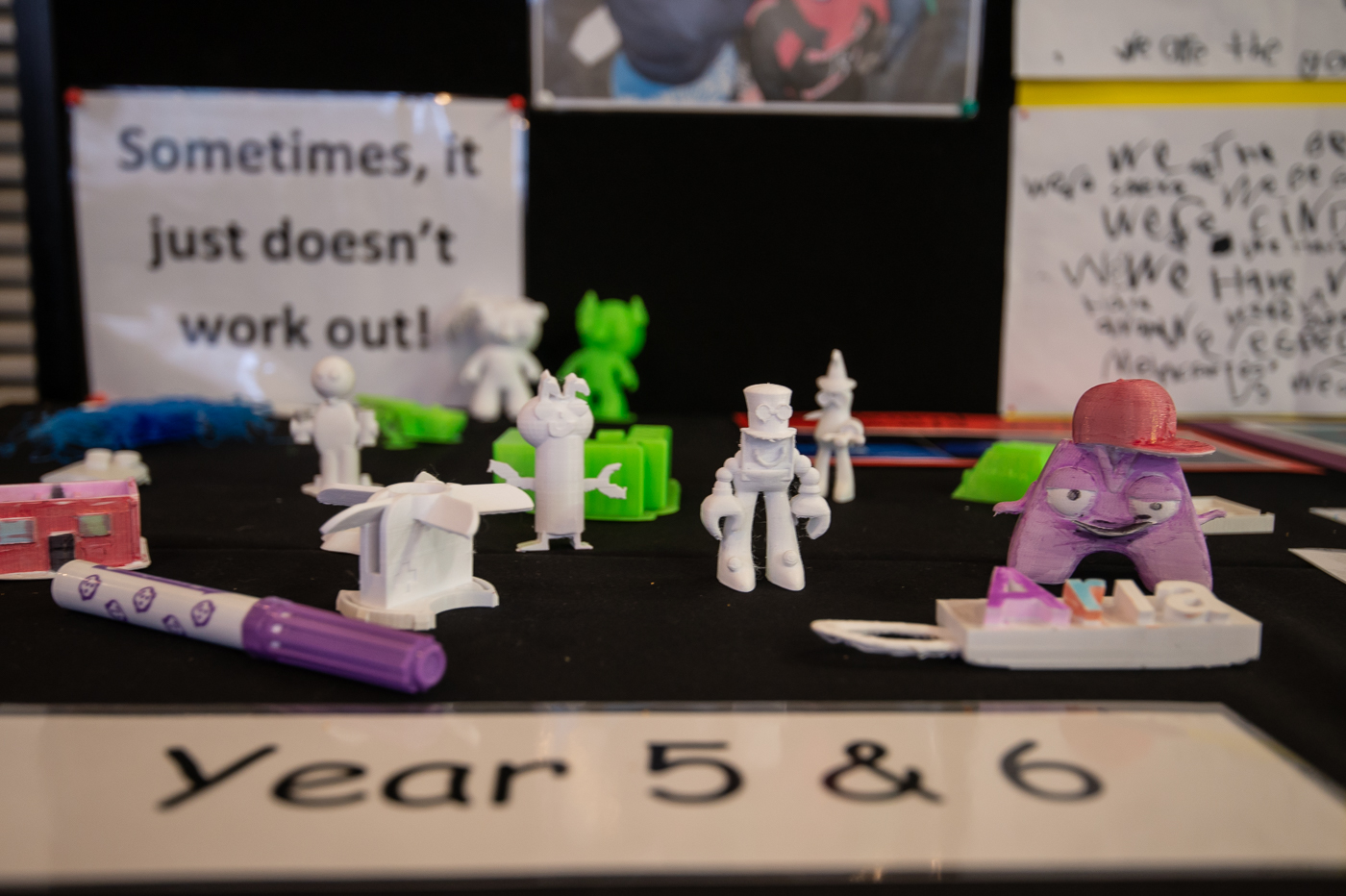
To thrive in the 21 st century our students need to be able to collaborate effectively with others, identify and develop innovative solutions to problems and challenges, and know how to think creatively and critically.
So, what is critical thinking? Critical thinking is the ability to think clearly and logically and to apply reasoning processes to ideas and situations. Critical thinkers ask questions and challenge information they are presented with. They seek to understand information from a range of perspectives, rather than jumping to conclusions and taking everything at face value.
Check out 6 key skills that effective critical thinkers have mastered .
Here we will look at ways that 3D design and printing can help our students develop these skills.
1. Understand the links between ideas
By providing a 3D design environment for students to create and invent in, Makers Empire challenges students to represent their ideas in a different way and asks them to move between abstract ideas, 2D, and 3D representations. Teachers have told us that when they ask students to sketch their ideas on paper before designing them in 3D, students think in deeper ways, move between the two design environments and work hard at transferring their thinking from one place to another.
2. Determine the importance and relevance of arguments and ideas
When used in collaboration with others, 3D design projects provide great contexts for students to give and receive feedback that helps them to further develop, evaluate and improve their designs. If clear design criteria are developed through the investigation and interpretation of a problem or opportunity, students can give and receive focused feedback and suggestions referenced against specific desired design outcomes.
3. Recognise, build and appraise arguments
3D design and printing offer many opportunities for students to construct positional arguments and appraise the solutions produced by others. We’ve seen some great examples, where students have developed persuasive arguments for why their design should be chosen as the one to be 3D printed. They need to demonstrate how their design best meets the agreed design criteria or best solves a problem.
4. Identify inconsistencies and errors in reasoning
3D printing is a great tool for producing prototypes of products for the purpose of testing and evaluating a design’s success in solving a problem or addressing the need. Testing a 3D printed prototype, not only enables students to test the functionality of their design, but also gather information on how well they have interpreted the design brief? Have they made assumptions? Are their ideas actually going to solve the problem in satisfactory ways? Or will their solution cause other problems?
5. Approach problems in a consistent and systematic way
In conjunction with design thinking process, 3D design and printing provide students with tools to approach problems in systematic, logical ways. Students start by identifying and interpreting a need or opportunity. They visualize approaches and generate ideas. These ideas drive the production of products and solutions which are then evaluated and improved in an iterative cycle.
6. Reflect on the justification of their own assumptions, beliefs, and values
Makers Empire 3D: Schools learning program supports teachers to engage their students in all aspects of authentic design experiences. An important element of the design thinking process is for students to understand the needs of the individual or group they are designing solutions for. They need to understand the experience of others and develop empathy for others. When viewing situations and problems from the perspective of others, students are required to think outside their own values and beliefs and challenge assumptions.
AUTHOR BIOGRAPHY
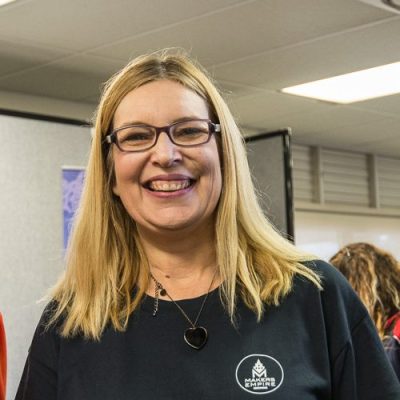
Mandi Dimitriadis, DipT. is an experienced classroom teacher who recognizes the power of technology to enhance teaching and improve educational outcomes. Mandi has extensive experience with curriculum development and learning, having previously developed programs for the Australian Government’s Department of Education. She is passionate about Design Thinking and how best to prepare today’s students for the future.
Makers Empire helps K-8 teachers teach Design Thinking, STEM and 21st-century learning skills using 3D printing. Our pioneering 3D solutions for schools include 3D modelling software, over 150 lesson plans aligned with international standards and professional development. With Makers Empire , engaged students learn how to solve real-world problems and make their world better.

Share this:

2024 Makers Empire Projects for Australian Schools
Makers Empire has hit the ground running again in 2024 with our pop…
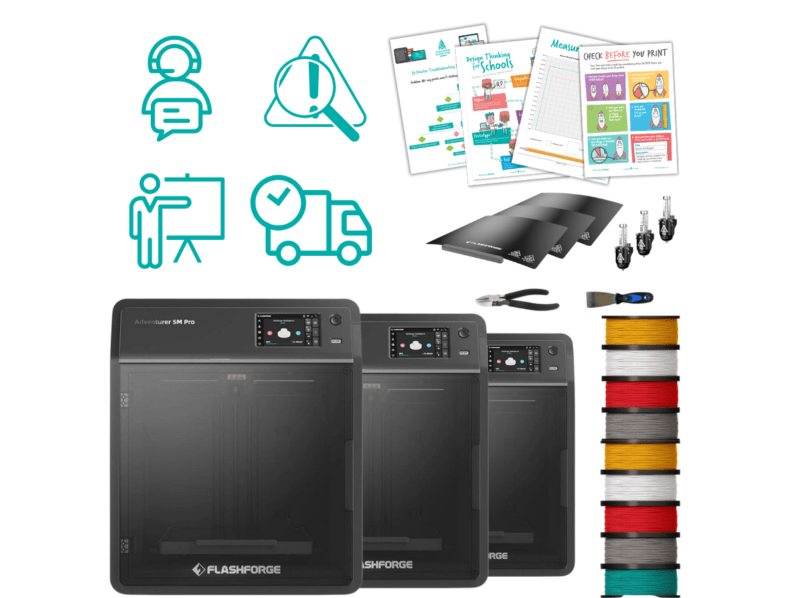
Review of the 2024 Flashforge Adventurer 5M Pro 3D Printer: A True Leap Forward
Flashforge has released a new Pro version of their popular Adventur…
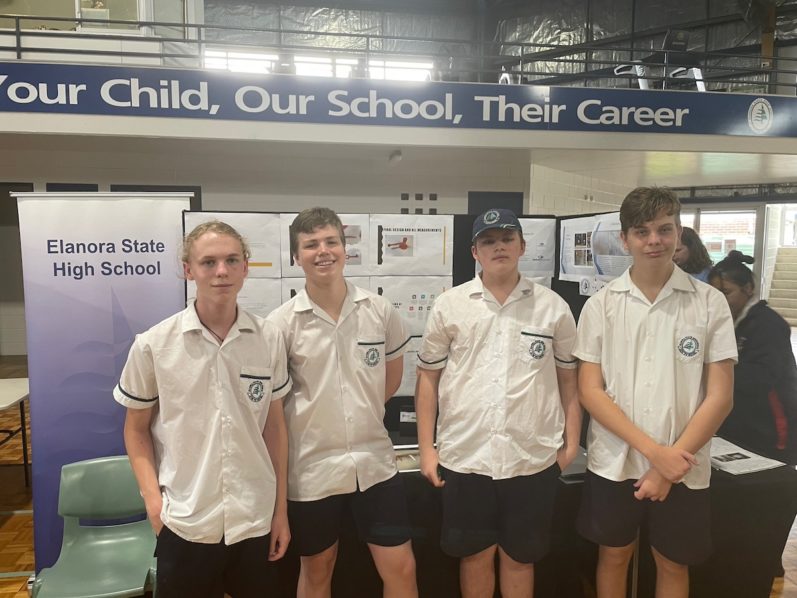
Register Your Interest for the 2024 STEM Advanced Manufacturing Moreton Bay Future Skills School Program
Following successful programs in Queensland in 2023, junior and sen…
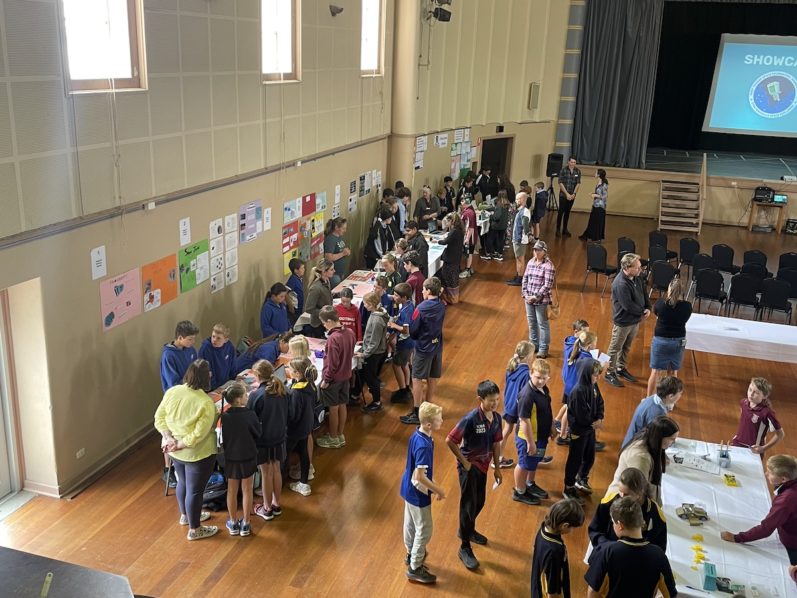
Andy Thomas Space Foundation and Makers Empire Provide Space Education Program to Eyre Peninsula Schools
The Andy Thomas Space Foundation and Makers Empire are delighted to…
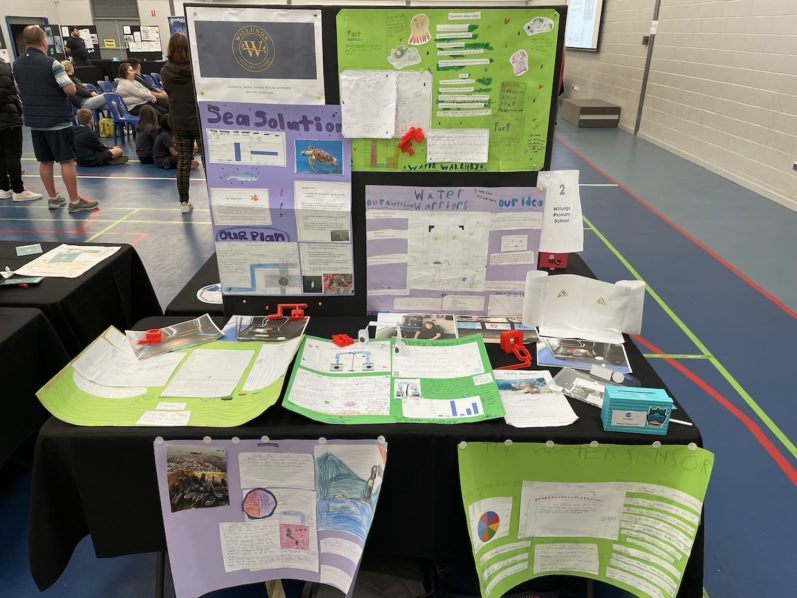
SA Water and Makers Empire Celebrate Second Year of Water Warriors Program
Recently, SA Water and Makers Empire celebrated the second year of …
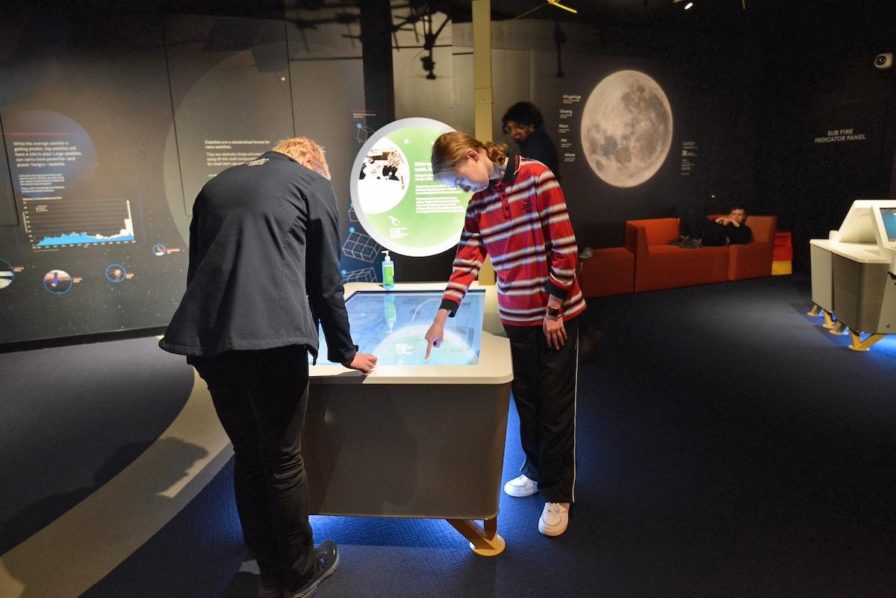
Andy Thomas Space Foundation and Makers Empire Deliver Inclusive Space Education Program To More Schools
Following a successful 2022 pilot, Makers Empire partnered again wi…

[Videos] American Teachers Share Their Fave Makers Empire Projects, Aha! Moments & Tips
We recently asked some of our American elementary and middle school…
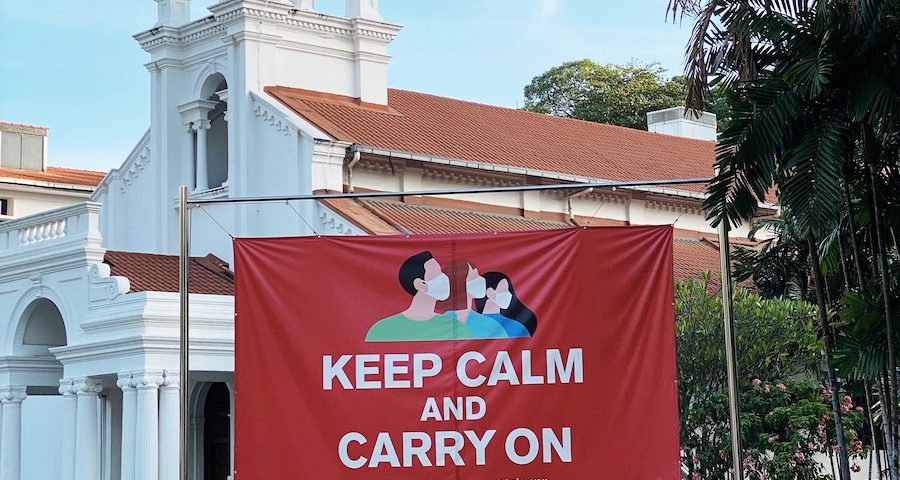
10 Coronavirus 3D Design Challenges For Students | Help People Affected By COVID-19
We’ve seen a recent surge of activity around the world as health au…

10 Design Challenges for Children To Help Create Positive Feelings During COVID-19
We are all navigating unchartered territory as we learn to cope wit…
Try Makers Empire for free!
Start learning 3D design in minutes. Make teaching design and technology fun and effective!
- USA (415) 652 0206
- AUS 61 (0)8 8120 3150
- Contact Makers Empire
- Get Tech Support
- Knowledgebase / FAQs
- 3D Design Software
- Class & School Subscriptions
- Learning by Design Course
- Custom Solutions
- Shop Makers Empire
- Knowledgebase
- Technical Support
- Free Printables
- Education Research
- Grants for Schools
- Makers Empire Blog
- Gallery of Designs
- Our Teachers
- Teacher Interviews
- Monthly Competitions
- Our Partners & Awards
- In the News
- Testimonials
- Major Milestones
- Terms of Service | Privacy
We acknowledge and pay our respects to the Kaurna people, the traditional custodians whose ancestral lands we gather on. We acknowledge the deep feelings of attachment and relationship of the Kaurna people to country and we respect and value their past, present and ongoing connection to the land and cultural beliefs.
Please wait while you are redirected to the right page...

List of Internet Providers


- Get started with computers
- Learn Microsoft Office
- Apply for a job
- Improve my work skills
- Design nice-looking docs
- Getting Started
- Smartphones & Tablets
- Typing Tutorial
- Online Learning
- Basic Internet Skills
- Online Safety
- Social Media
- Zoom Basics
- Google Docs
- Google Sheets
- Career Planning
- Resume Writing
- Cover Letters
- Job Search and Networking
- Business Communication
- Entrepreneurship 101
- Careers without College
- Job Hunt for Today
- 3D Printing
- Freelancing 101
- Personal Finance
- Sharing Economy
- Decision-Making
- Graphic Design
- Photography
- Image Editing
- Learning WordPress
- Language Learning
- Critical Thinking
- For Educators
- Translations
- Staff Picks
- English expand_more expand_less
Critical Thinking and Decision-Making - What is Critical Thinking?
Critical thinking and decision-making -, what is critical thinking, critical thinking and decision-making what is critical thinking.

Critical Thinking and Decision-Making: What is Critical Thinking?
Lesson 1: what is critical thinking, what is critical thinking.
Critical thinking is a term that gets thrown around a lot. You've probably heard it used often throughout the years whether it was in school, at work, or in everyday conversation. But when you stop to think about it, what exactly is critical thinking and how do you do it ?
Watch the video below to learn more about critical thinking.
Simply put, critical thinking is the act of deliberately analyzing information so that you can make better judgements and decisions . It involves using things like logic, reasoning, and creativity, to draw conclusions and generally understand things better.

This may sound like a pretty broad definition, and that's because critical thinking is a broad skill that can be applied to so many different situations. You can use it to prepare for a job interview, manage your time better, make decisions about purchasing things, and so much more.
The process

As humans, we are constantly thinking . It's something we can't turn off. But not all of it is critical thinking. No one thinks critically 100% of the time... that would be pretty exhausting! Instead, it's an intentional process , something that we consciously use when we're presented with difficult problems or important decisions.
Improving your critical thinking

In order to become a better critical thinker, it's important to ask questions when you're presented with a problem or decision, before jumping to any conclusions. You can start with simple ones like What do I currently know? and How do I know this? These can help to give you a better idea of what you're working with and, in some cases, simplify more complex issues.
Real-world applications

Let's take a look at how we can use critical thinking to evaluate online information . Say a friend of yours posts a news article on social media and you're drawn to its headline. If you were to use your everyday automatic thinking, you might accept it as fact and move on. But if you were thinking critically, you would first analyze the available information and ask some questions :
- What's the source of this article?
- Is the headline potentially misleading?
- What are my friend's general beliefs?
- Do their beliefs inform why they might have shared this?

After analyzing all of this information, you can draw a conclusion about whether or not you think the article is trustworthy.
Critical thinking has a wide range of real-world applications . It can help you to make better decisions, become more hireable, and generally better understand the world around you.

/en/problem-solving-and-decision-making/why-is-it-so-hard-to-make-decisions/content/

- LEARNING SKILLS
- Study Skills
- Critical Thinking
Search SkillsYouNeed:
Learning Skills:
- A - Z List of Learning Skills
- What is Learning?
- Learning Approaches
- Learning Styles
- 8 Types of Learning Styles
- Understanding Your Preferences to Aid Learning
- Lifelong Learning
- Decisions to Make Before Applying to University
- Top Tips for Surviving Student Life
- Living Online: Education and Learning
- 8 Ways to Embrace Technology-Based Learning Approaches
Critical Thinking Skills
- Critical Thinking and Fake News
- Understanding and Addressing Conspiracy Theories
- Critical Analysis
- Top Tips for Study
- Staying Motivated When Studying
- Student Budgeting and Economic Skills
- Getting Organised for Study
- Finding Time to Study
- Sources of Information
- Assessing Internet Information
- Using Apps to Support Study
- What is Theory?
- Styles of Writing
- Effective Reading
- Critical Reading
- Note-Taking from Reading
- Note-Taking for Verbal Exchanges
- Planning an Essay
- How to Write an Essay
- The Do’s and Don’ts of Essay Writing
- How to Write a Report
- Academic Referencing
- Assignment Finishing Touches
- Reflecting on Marked Work
- 6 Skills You Learn in School That You Use in Real Life
- Top 10 Tips on How to Study While Working
- Exam Skills
- Writing a Dissertation or Thesis
- Research Methods
- Teaching, Coaching, Mentoring and Counselling
- Employability Skills for Graduates
Subscribe to our FREE newsletter and start improving your life in just 5 minutes a day.
You'll get our 5 free 'One Minute Life Skills' and our weekly newsletter.
We'll never share your email address and you can unsubscribe at any time.
What is Critical Thinking?
Critical thinking is the ability to think clearly and rationally, understanding the logical connection between ideas. Critical thinking has been the subject of much debate and thought since the time of early Greek philosophers such as Plato and Socrates and has continued to be a subject of discussion into the modern age, for example the ability to recognise fake news .
Critical thinking might be described as the ability to engage in reflective and independent thinking.
In essence, critical thinking requires you to use your ability to reason. It is about being an active learner rather than a passive recipient of information.
Critical thinkers rigorously question ideas and assumptions rather than accepting them at face value. They will always seek to determine whether the ideas, arguments and findings represent the entire picture and are open to finding that they do not.
Critical thinkers will identify, analyse and solve problems systematically rather than by intuition or instinct.
Someone with critical thinking skills can:
Understand the links between ideas.
Determine the importance and relevance of arguments and ideas.
Recognise, build and appraise arguments.
Identify inconsistencies and errors in reasoning.
Approach problems in a consistent and systematic way.
Reflect on the justification of their own assumptions, beliefs and values.
Critical thinking is thinking about things in certain ways so as to arrive at the best possible solution in the circumstances that the thinker is aware of. In more everyday language, it is a way of thinking about whatever is presently occupying your mind so that you come to the best possible conclusion.
Critical Thinking is:
A way of thinking about particular things at a particular time; it is not the accumulation of facts and knowledge or something that you can learn once and then use in that form forever, such as the nine times table you learn and use in school.
The Skills We Need for Critical Thinking
The skills that we need in order to be able to think critically are varied and include observation, analysis, interpretation, reflection, evaluation, inference, explanation, problem solving, and decision making.
Specifically we need to be able to:
Think about a topic or issue in an objective and critical way.
Identify the different arguments there are in relation to a particular issue.
Evaluate a point of view to determine how strong or valid it is.
Recognise any weaknesses or negative points that there are in the evidence or argument.
Notice what implications there might be behind a statement or argument.
Provide structured reasoning and support for an argument that we wish to make.
The Critical Thinking Process
You should be aware that none of us think critically all the time.
Sometimes we think in almost any way but critically, for example when our self-control is affected by anger, grief or joy or when we are feeling just plain ‘bloody minded’.
On the other hand, the good news is that, since our critical thinking ability varies according to our current mindset, most of the time we can learn to improve our critical thinking ability by developing certain routine activities and applying them to all problems that present themselves.
Once you understand the theory of critical thinking, improving your critical thinking skills takes persistence and practice.
Try this simple exercise to help you to start thinking critically.
Think of something that someone has recently told you. Then ask yourself the following questions:
Who said it?
Someone you know? Someone in a position of authority or power? Does it matter who told you this?
What did they say?
Did they give facts or opinions? Did they provide all the facts? Did they leave anything out?
Where did they say it?
Was it in public or in private? Did other people have a chance to respond an provide an alternative account?
When did they say it?
Was it before, during or after an important event? Is timing important?
Why did they say it?
Did they explain the reasoning behind their opinion? Were they trying to make someone look good or bad?
How did they say it?
Were they happy or sad, angry or indifferent? Did they write it or say it? Could you understand what was said?
What are you Aiming to Achieve?
One of the most important aspects of critical thinking is to decide what you are aiming to achieve and then make a decision based on a range of possibilities.
Once you have clarified that aim for yourself you should use it as the starting point in all future situations requiring thought and, possibly, further decision making. Where needed, make your workmates, family or those around you aware of your intention to pursue this goal. You must then discipline yourself to keep on track until changing circumstances mean you have to revisit the start of the decision making process.
However, there are things that get in the way of simple decision making. We all carry with us a range of likes and dislikes, learnt behaviours and personal preferences developed throughout our lives; they are the hallmarks of being human. A major contribution to ensuring we think critically is to be aware of these personal characteristics, preferences and biases and make allowance for them when considering possible next steps, whether they are at the pre-action consideration stage or as part of a rethink caused by unexpected or unforeseen impediments to continued progress.
The more clearly we are aware of ourselves, our strengths and weaknesses, the more likely our critical thinking will be productive.
The Benefit of Foresight
Perhaps the most important element of thinking critically is foresight.
Almost all decisions we make and implement don’t prove disastrous if we find reasons to abandon them. However, our decision making will be infinitely better and more likely to lead to success if, when we reach a tentative conclusion, we pause and consider the impact on the people and activities around us.
The elements needing consideration are generally numerous and varied. In many cases, consideration of one element from a different perspective will reveal potential dangers in pursuing our decision.
For instance, moving a business activity to a new location may improve potential output considerably but it may also lead to the loss of skilled workers if the distance moved is too great. Which of these is the more important consideration? Is there some way of lessening the conflict?
These are the sort of problems that may arise from incomplete critical thinking, a demonstration perhaps of the critical importance of good critical thinking.
Further Reading from Skills You Need

The Skills You Need Guide for Students

Develop the skills you need to make the most of your time as a student.
Our eBooks are ideal for students at all stages of education, school, college and university. They are full of easy-to-follow practical information that will help you to learn more effectively and get better grades.
In Summary:
Critical thinking is aimed at achieving the best possible outcomes in any situation. In order to achieve this it must involve gathering and evaluating information from as many different sources possible.
Critical thinking requires a clear, often uncomfortable, assessment of your personal strengths, weaknesses and preferences and their possible impact on decisions you may make.
Critical thinking requires the development and use of foresight as far as this is possible. As Doris Day sang, “the future’s not ours to see”.
Implementing the decisions made arising from critical thinking must take into account an assessment of possible outcomes and ways of avoiding potentially negative outcomes, or at least lessening their impact.
- Critical thinking involves reviewing the results of the application of decisions made and implementing change where possible.
It might be thought that we are overextending our demands on critical thinking in expecting that it can help to construct focused meaning rather than examining the information given and the knowledge we have acquired to see if we can, if necessary, construct a meaning that will be acceptable and useful.
After all, almost no information we have available to us, either externally or internally, carries any guarantee of its life or appropriateness. Neat step-by-step instructions may provide some sort of trellis on which our basic understanding of critical thinking can blossom but it doesn’t and cannot provide any assurance of certainty, utility or longevity.
Continue to: Critical Thinking and Fake News Critical Reading
See also: Analytical Skills Understanding and Addressing Conspiracy Theories Introduction to Neuro-Linguistic Programming (NLP)

Center for Excellence in Teaching
Encouraging critical thinking with scientific sketching activities, pragna patel, professor of biochemistry & molecular medicine at usc’s keck school of medicine, uses sketching activities to help students develop critical thinking skills in her courses and beyond..
Professor Patel was a 2021 recipient of the Associates Award for Excellence in Teaching
Watch this 2-minute video and scroll down for the full interview, plus tips for implementing this in your course!
Read more about this approach in Pragna’s own words:
Download this file [6.23 MB]
Interested in using sketching activities in your course?
Here are some tips for implementation:.
- Explain the purpose and process of making a sketch. Make a point to students that the artfulness of the sketch is not the main focus, rather it is the information contained in the sketch that is important.
- Provide them with a model and identify the key elements of a successful sketch.
- Ask students to complete their sketches individually or in small groups.
- Ask students to either reflect on their individual sketches, switch sketches with a peer and review, or discuss as a class.
- Lead a class debrief or provide group or individual feedback to tie the activity back to course content and your objectives for the activity.
- After the activity, students may submit their sketches or keep them as a study guide. Sketches could also be posted in the classroom or shared with the class virtually on a discussion board for follow-up activities.
More resources for active learning and sketching activities :
- CET’s Active Learning Facilitation Process Resource
- Hoskins, S. G., Lopatto, D., & Stevens, L. M. (2011). The C.R.E.A.T.E. Approach to Primary Literature Shifts Undergraduates’ Self-Assessed Ability to Read and Analyze Journal Articles, Attitudes about Science, and Epistemological Beliefs . CBE Life Sciences Education , 10(4), 368–378.
- From STEM to STEAM: 9 Specific Strategies for Adding the Art (Blog post)
What does the research say?
Edlund, A. F., & Balgopal, M. M. (2021). Drawing-to-Learn: Active and Culturally Relevant Pedagogy for Biology . Frontiers in Communication , 6.
Helen J. DeWaard, Giulia Forsythe, & Deborah Baff. (2024). Graphically Speaking: Expanding Landscapes of Scholarly Writing Using Sketchnotes . Brock Education , 33(1).
Nesbit JC, Adesope OO. Learning with Concept and Knowledge Maps: A Meta-Analysis . Review of educational research . 2006;76(3):413-448.
Wu, S. P. W., Van Veen, B., & Rau, M. A. (2020). How drawing prompts can increase cognitive engagement in an active learning engineering course . Journal of Engineering Education (Washington, D.C.), 109(4), 723–742.
Category: Teaching
Back to Faculty Profiles
Our Latest Teaching Resources
- A closer look: Information literacy
- Persona Power: Unleashing Creativity and Diversity in Music Marketing
- Engaging students through group work and advocacy
- Low-barrier in-class group assignments using Google Slides
- Writing together for Wikipedia
Follow Us On Social Media

StarsInsider
Ways to improve your critical thinking
Posted: March 26, 2024 | Last updated: March 26, 2024

Critical thinking is an essential skill for anyone who wishes to be successful in business. It is what allows us to analyze information properly to find appropriate solutions to problems. But it is also important to think critically in every day life; it helps us to filter out fake news, for example.
While most of us have a certain level of critical thinking capacity, there is often room for improvement. Check out this gallery for some tips on how to improve your critical thinking.
You may also like: Do you recognize these big TV stars from 10 years ago?
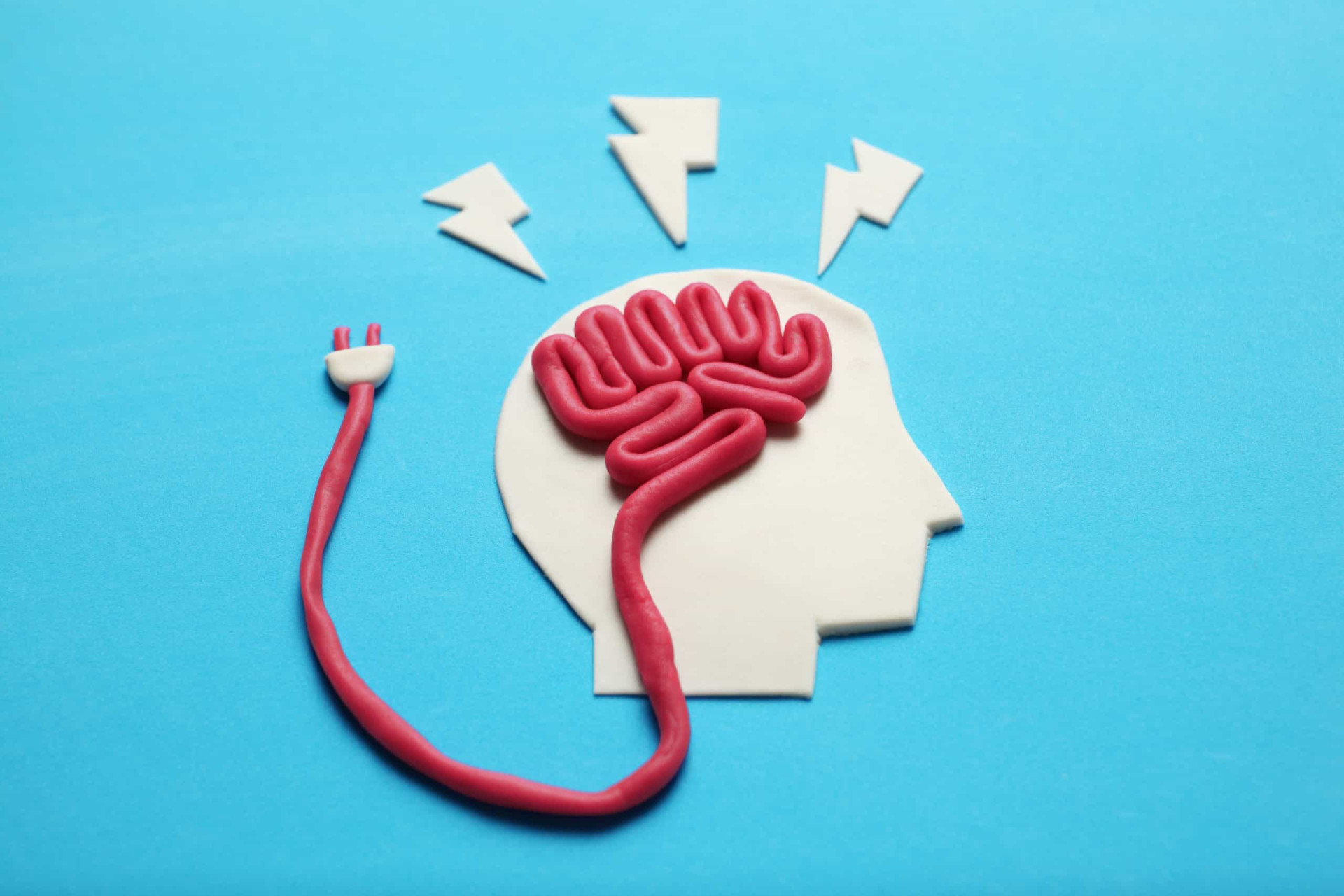
Understand the concept of critical thinking
Before you set about trying to build those critical thinking skills, it is important to first understand what exactly critical thinking is. Put simply, it is the ability to think about ideas and concepts in a critical way.
Follow us and access great exclusive content every day

It is the difference between accepting what you're told at face value and asking questions such as why you're being told that and what is the motivation of the speaker.
You may also like: Scottish landscapes that will take your breath away

Ask questions
It follows, then, that when learning to think critically it is important to ask questions. When you next read a report or listen to a presentation, try and ask as many questions as you can.

Although you run the risk of winding up the presenter, asking questions is in everyone's interest because it can help to expose weaknesses in logic and pave the way for a better solution to a problem.
You may also like: Laugh out loud: The best comedians in history

Question yourself
In addition to asking questions about the information in front of you, it is important also to question your own thoughts and actions on a regular basis.

Questioning yourself will help you identify behaviors that are unhelpful or self-defeating. All too often we continue with a certain behavior because it seems right, when in fact it is making things worse.
You may also like: The (often bizarre) foods historical figures loved

Pay attention to all incoming information
It is paramount that you pay attention to all information coming your way, whether or not it comes from a source or person you agree with.

People without critical thinking skills tend to tune out information that they don't want to hear, when in fact people we don't like nearly always have something useful to say.
You may also like: Funny celebrity moments: pranksters on the red carpet

Develop foresight
Good critical thinking always involves an element of foresight. Successful critical thinkers are able to use the information available to them to predict what will happen in the future.

However, foresight is not about clairvoyants and tarot cards. Instead it is about carefully considering all the possible consequences of a certain action.
You may also like: The dark side of Walt Disney

Reduce time-wasting
Critical thinking, like anything else, takes practice. It is therefore a good idea to rid your life of time-wasting activities, such as Netflix bingeing, so you have more time to practice.

That does not mean to say you shouldn't relax, however. In fact, the brain needs downtime in order to develop. Try and go for something more stimulating, though, like reading a book.
You may also like: Hit songs you didn't know were written by Prince

Plan your day
The more you practice critical thinking, the more easily it will come. In the beginning, however, it takes time. It is therefore important to maximize your time by planning carefully.

Prioritize your tasks and don't bite off more than you can chew. Make sure that you are allowing yourself enough time to really focus on each of your projects and consider them critically.
You may also like: Torture tracks: Songs that have been weaponized

Practice critical thinking in your daily life
Do not limit your critical thinking practice to office hours. While being able to think critically is a must if you want to be successful in business, it is also an important life skill in everyday life.

Next time you are choosing a book to read or watching the news, ask yourself what you want to gain from the book, or why that newsreader is emphasizing a particular story.
You may also like: Famous women who were demonized by the media

Keep a thought journal
Try to keep a record of difficult situations that arise and how you handle them. Writing down your thoughts on such situations will help you to reflect better on your own actions.

It may not be easy at first, but laying bare your reactions to a difficult situation will help you to identify and eliminate destructive behaviors and therefore solve problems more efficiently.
You may also like: Celebrities who were raised by single fathers

Check your ego
Having a big head can inhibit critical thinking since it makes it difficult to be objective when assessing a situation. However, being too altruistic doesn't help either.

Try to assign the same level of importance to both your needs and the needs of others. When analyzing a situation, try to focus on people's motivations; why do they want a certain outcome?
You may also like: Funniest sayings from around the world

Practice active listening
Active listening involves truly paying attention while someone else is talking, and not letting your eyes glaze over and your mind run off elsewhere.

Not only is it rude not to listen properly when someone is presenting, but you will miss important information and/or ideas that should be submitted to your own mental analysis.
You may also like: Bandmates who hated each other

Evaluate existing evidence
If you have a business problem to solve, the likelihood is that someone before you has solved a very similar if not identical issue. Make the most of past learnings to help you in the present.

Ask yourself whether you have encountered the issue before and, if not, speak to others. Use all the information available to you to find a successful solution.
You may also like: These celebrities live in surprisingly modest homes

Engage a mentor
Like many other things in life, critical thinking can be taught. If the tips in this gallery aren't enough, it may be an idea to find a mentor who can help you on your way to becoming a critical thinking expert.

A mentor may be able to frame critical thinking in such a way that it becomes more accessible and natural to you, and they may have resources for you to practice with.
You may also like: Bizarre jobs that no longer exist

Participate in team-building activities
Many team-building activities put on by companies have the aim of improving the critical thinking skills of employees.

Try not to let the thought of your next team-building session fill you with dread. Instead, see it as an opportunity to hone those critical thinking skills and give you a competitive advantage.
You may also like: Bizarre jobs within the British royal household

Take on a leadership role
If you're feeling confident, why not throw yourself in the deep end and volunteer to lead a project? Leaders are required to constantly think critically, meaning you'll have loads of practice.

And as we all know, practice makes perfect. So next time your boss asks for a volunteer to head a new initiative, why not take the plunge?
Sources: (Indeed) (Small Businessify)
See also: 30 fun virtual team building ideas
More for You
The most dangerous state to drive in in the US, according to data—plus, see where your state ranks
Oklahoma Tornado Videos Show Terrifying Storms As Buildings Damaged
After Stellar Draft, New York Jets Own Top Roster in AFC East
You Won't Even Miss The Meat In This Flavorful Shroomami Burger
Scientists finally confirm what lies inside the Moon
Things To Do After Beating Dragon's Dogma 2
The most expensive state to live in isn't California or New York, based on data. Here are the top 10.
I’m a Bank Teller: 3 Times You Should Never Ask For $100 Bills at the Bank
Genshin Impact: Where His Life Lies Quest Guide (In Those Ruins Of Dreams Achievement)
6 Medications You Should Never Mix With Dairy
Netflix Chills: 15 Movies That Will Send Shivers Down Your Spine
Caitlin Clark Tweaks Shoulder During Promotion at Bucks-Pacers Playoff Game
The 26 Most Dangerous Cities in the U.S. Ranked
Lost Planet Theia Is Hidden Inside the Earth, New Study Says
Russian Mercenaries Hunt the African Warlord America Couldn't Catch
4 Supplements You Shouldn't Take If You're Trying to Lose Weight, According to Dietitians
The films everyone should see at least once before they die, according to critics
A man who 'hopes he runs out of money' before he dies explains why you may not need as much cash to retire as you think
Kirk Cousins comments on Falcons' decision to draft QB Michael Penix Jr.
The Greatest Heroines of All Time
Thinking - Men (Standing)
Thinking is an activity that all humans do. René Descartes coined the iconic phrase “cogito, ergo sum,” which translates to “I think, therefore I am,” when searching for a single, undoubtable phrase. Since he was thinking, René Descartes could not doubt that he existed. Thinking is an important step to do before speaking or acting. Speaking or acting without thinking can have undesirable consequences.
*Under Development*
Age: 25-40 Style: Casual
Drawings include: Men Thinking (standing) elevation (detail), elevation (silhouette)
Wikipedia - Thought
2D Downloads
3d downloads.
Thinking, or thought, is the operation of the brain in conscious activity. Still widely debated as to the origins and nature of thought, it is a process behind many human actions and interactions and differs in quality from pure instinct and the adaptive unconscious.
More From Forbes
Improve your critical thinking by avoiding assumptions.
- Share to Facebook
- Share to Twitter
- Share to Linkedin
In a post earlier this month, I shared three questions we can ask ourselves in the moment to avoid allowing our snap decision about someone’s idea hardening into a firm conviction without more critical thinking. Let’s deepen that skill set by reframing our approach to individuals, contexts, and perspectives.
All effective changes to behavior happen on an immediate, tangible level, not on a broad philosophical plane. Saying to yourself, I’m going to be a nicer person doesn’t impact your actions. Saying, I’m going to hold the door for someone, hold someone’s hand when they need me, or hold my tongue when I want to criticize – those specific actions make us a nicer person.
Likewise, when we are trying to think more critically about an issue, it’s helpful to have specific questions or approaches that allow us to actually put critical thinking techniques in place. It doesn’t help to say, “I’m going to be a deeper thinker,” since I’m not even sure what that would mean. Instead, adopt approaches that combat the habits that keep us from thinking more openly about an issue and factoring in better information. Here are three specific statements we can say to ourselves that will help us remain more open.
1. There’s an old adage that “even a stopped clock is right twice a day.” (This assumes an analog clock, not an unplugged digital clock.) Likewise, even the person in our life with questionable judgment whose opinion we immediately discount or ignore might occasionally have a nugget of wisdom to share. Remain open. Who is the stopped clock in your life? When Uncle Bud or Lulu from Marketing approaches with that eager look of, “Have I got an idea for you!” instead of ducking for cover, say to yourself, “It’s half-past-two…again.” This may be their one good idea for the year, and you don’t want to miss it. Be patient. Hear them out. You can still decide to discount their conclusion, but you will have remained open to their analysis, and there may be a learning moment in there for you. To discount an entire human being is a great loss and deprives us of possible wisdom, however cluttered with our previous experience with someone.
2. It’s human nature to develop patterns of behavior and apply them to specific settings. For instance, some people act one way at home and a different way at work. When we attend certain meetings or engage with particular teams at the office, we get into patterns of behavior and thinking that can limit us and our impact and rob the company or firm of our insights. We might be the most open, thoughtful, creative contributor in some meetings and then withdraw and shut down in other contexts. Sometimes these shifts in behavior are justified by our knowledge base on a topic, the presence of certain colleague at the table, or other factors. But sometimes, our shift in behavior is arbitrary or a matter of habit.
My wife and I have four kids. When they were still home, the six of us each had our particular seat at the table for dinner – same seat every night – like many families. It would have felt weird if, when we went to sit down for dinner, Sam plopped down in Teresa’s chair. And yet, for other meals, we all sat anywhere. Why such formality at one time and such reckless abandon at others? What’s the metaphorical seat you take at certain meetings at work? You’re open and enthusiastic at the Marketing Meeting, asking great questions and comfortable challenging assumptions - your own and others’. As you’re walking into the Sales Meeting where you tend to be more withdrawn, tell yourself, “This is lunch, not dinner. I can sit anywhere. I can contribute like I do in the Marketing Meeting.”
WhatsApp Brand New iPhone Feature Just Launched That’s Much Easier To Use
Earth s new second moon is as big as the statue of liberty and scientists just found its origin, new apple id password reset issue hitting iphone ipad and macbook users.
I’m not suggesting you bring your worst behaviors into every setting. If you’re overbearing at one meeting and quiet at another, please don’t bulldoze through every meeting. It’s about bringing out your better qualities more frequently – about listening and remaining open more consistently.
3. We’re all self-centered. It’s part of human nature. It’s not bad, or Machiavellian; it’s just a basic survival instinct. To contribute most meaningfully at work, and to avoid the kinds of assumptions that keep us from being more successful, we need to challenge that most basic thinking. When we offer an opinion at work, we often fall prey to two forces that keep us from making better decisions - our ego and our self-interest.
When we’re weighing options in a meeting, and one of the options on the table is our suggestion, we’re likely to want to see that option succeed because it’s our idea, regardless of whether, objectively, it’s the best solution. Completely separately, one of the options might actually hold more value for us, and sometimes that value may be outside the knowledge of the group at large. In that case, we’ll often side with the option where the benefit inures to us over others. When these situations arise, we’re best served to ask ourselves a very tough question. “To what extent am I part of the problem?” Is the way we’re contributing truly in the best interest of the group, or is my ego, self-interest, or stubbornness getting in the way?
Asking this question of ourselves is tough enough. If we conclude we are, in fact, part of the problem, acting to rectify the situation is even harder. Hopefully, we can get there. But if not, just asking the question of ourselves will naturally temper our reactions and encourage us to be more open.
In sum, to remain more open and to think more critically, we should challenge ourselves to:
1. remain open to ideas from others, even those with whom we don’t usually agree,
2. rethink why we behave differently in certain settings and assess whether it’s time to contribute more meaningfully (sometimes this might mean talking less, not more),
3. challenge the motive behind the ideas we support and decide if we need to get out of the way.

- Editorial Standards
- Reprints & Permissions

IMAGES
VIDEO
COMMENTS
A new way to look at things to solve a complex problem. That's where thinking in 3D - or three-dimensional thinking - can help. The scientific word for 3D thinking is spatial visualization. Spatial visualization is the ability to rotate, maneuver, and disassemble two and three-dimensional objects in your head.
Here are some of the key elements and why they are so important. 1. Holding two conflicting ideas in your head simultaneously. This is huge in being a 3 dimensional thinker. Learning to clearly ...
Three-dimensional thinking and communication are critical during this era of increasingly complex data. Hololens has the potential to transform scientific thinking, analysis, and communication by seamlessly integrating the virtual and the physical world. Books. 1.
This 3D thinking requires great awareness and intelligence from leaders. Discover our range of Executive Education programmes. The Latin meaning of intelligence is an ability to read between the lines, which is a wonderful way of getting across the sensitivities of the context, as leaders need to extract meaning from those things that are ...
The Three-Dimensional (3D) Thinking™ framework helps structure critical thinking by showing how to appropriately bring past experience, present intuition, and future ambiguity- in other words: hindsight, insight, and foresight - to bear on any given problem. ... Chapters are followed by critical thinking questions and questions related to ...
The 3D Thinking Framework™ is part of what makes the contextual intelligence model unique. It ties together the three mental models and the 12 behaviors. 3D Thinking is the process of integrating inputs from the past and the future to inform your real-time decisions in the present.
Practical Application: The 3D Thinking Model. Kutz provides a graphic representation of the 3D thinking model, illustrating the proper relationship and balance between hindsight, insight, and foresight. This proportional lens ensures that decisions, conversations, and evaluations consider all three time orientations.
This study used a Research and Development (R & D) method, specifically, the ADDIE model consists of five main stages: (1) analysis; (2) design; (3) develop; (4) implement; (5) and evaluate. The product of this development was a 3D visualization program based virtual reality in a chemical bonding practicum.
So, what is critical thinking? Critical thinking is the ability to think clearly and logically and to apply reasoning processes to ideas and situations. Critical thinkers ask questions and challenge information they are presented with. ... In conjunction with design thinking process, 3D design and printing provide students with tools to ...
This book offers a structured framework for critical thinking and decision making that shows how to use hindsight, insight, and foresight to navigate through complexity. Every organization and every person faces rapid change and complexity. Contextual intelligence - understanding fully the context in which one is operating - teaches the reader how to navigate that complexity and respond ...
According to the University of the People in California, having critical thinking skills is important because they are [ 1 ]: Universal. Crucial for the economy. Essential for improving language and presentation skills. Very helpful in promoting creativity. Important for self-reflection.
Critical making, which links critical thinking to physical construction, can be described as a more modern, if least common (14.6% of studies), way to describe 3D printing (Ratto, 2011). It goes a step further than constructionism to emphasize the importance of the social aspect and problem-solving areas in everyday life (Ratto, 2011 ).
Critical thinking is defined as the "WH questions": "what, when, where, how, who, and why" taken from Aristotle's Nicomachean Ethics. These questions are threaded through the practices of concept maps, collaboration, and assessment.
Critical Thinking. Critical thinking is a widely accepted educational goal. Its definition is contested, but the competing definitions can be understood as differing conceptions of the same basic concept: careful thinking directed to a goal. Conceptions differ with respect to the scope of such thinking, the type of goal, the criteria and norms ...
The practicality of 3D data collection. Some may argue that a study, such as the one described above, is an impracticality. I say to that, anything less is an exercise in futility, save for areas of direct cause and effect (and even that could be enhanced by 3D thinking concepts) and ultimately would be providing a disservice to mankind.
Critical thinking is the ability to effectively analyze information and form a judgment. To think critically, you must be aware of your own biases and assumptions when encountering information, and apply consistent standards when evaluating sources. Critical thinking skills help you to: Identify credible sources. Evaluate and respond to arguments.
Check out 6 key skills that effective critical thinkers have mastered. Here we will look at ways that 3D design and printing can help our students develop these skills. 1. Understand the links between ideas. By providing a 3D design environment for students to create and invent in, Makers Empire challenges students to represent their ideas in a ...
What is the impact of 3D simulations on critical thinking in medical education? - A study published in the Journal of Medical Internet Research reveals a significant increase in critical thinking scores among medical students when engaged in virtual surgeries within 3D simulations. 2.
Simply put, critical thinking is the act of deliberately analyzing information so that you can make better judgements and decisions. It involves using things like logic, reasoning, and creativity, to draw conclusions and generally understand things better. This may sound like a pretty broad definition, and that's because critical thinking is a ...
Critical thinking is thinking about things in certain ways so as to arrive at the best possible solution in the circumstances that the thinker is aware of. In more everyday language, it is a way of thinking about whatever is presently occupying your mind so that you come to the best possible conclusion.
The results showed that the improvement of mathematical critical thinking skills of students who received learning using augmented reality media with Unity 3D was better than the improvement of ...
A thorough way of defining critical thinking is made by the Stanford Encyclopedia of Philosophy. They summarise the core concepts of critical thinking as the process of 'careful goal-directed thinking.' We can also turn to our open step on critical thinking at university, which features this definition:
Director, 3D Digital Design From Gene Fram • AI and Nobel Prize Winners Discuss Science, Democracy, and Critical Thinking • When It Comes to Critical Thinking, AI Flunks the Test • The Importance of Defining Failure in Your Innovation Process • The human side of generative AI: Creating a path to productivity CO-SPONSORED •
Office of the Provost 3601 Watt Way, GFS 227 University of Southern California Los Angeles, CA 90089-1691 [email protected] (213) 740-3959. Contact Us
Critical thinking is an essential skill for anyone who wishes to be successful in business. It is what allows us to analyze information properly to find appropriate solutions to problems.
A comprehensive reference database of dimensioned drawings documenting the standard measurements and sizes of the everyday objects and spaces that make up our world. Scaled 2D drawings and 3D models available for download. Updated daily. Thinking is an activity that all humans do. René Descartes coined the iconic phrase "cogito, ergo sum ...
3. We're all self-centered. It's part of human nature. It's not bad, or Machiavellian; it's just a basic survival instinct. To contribute most meaningfully at work, and to avoid the kinds ...